After our spectacular visit to the UNESCO site at Ilulissat, Day 8 found us north of there in Uummannaq Fjord with two stops planned: the first at the archaeological site Qilakitsoq on the Nuussuaq Peninsula, the location of the discovery of eight 500-year-old mummies who lived at the time of the Thule people; the second at the town of Uummannaq itself on Uummannaq Island. En route, we passed mountains flanking the fjord showing an alluvial fan at the bottom for glacial runoff, with ice far up the valley.
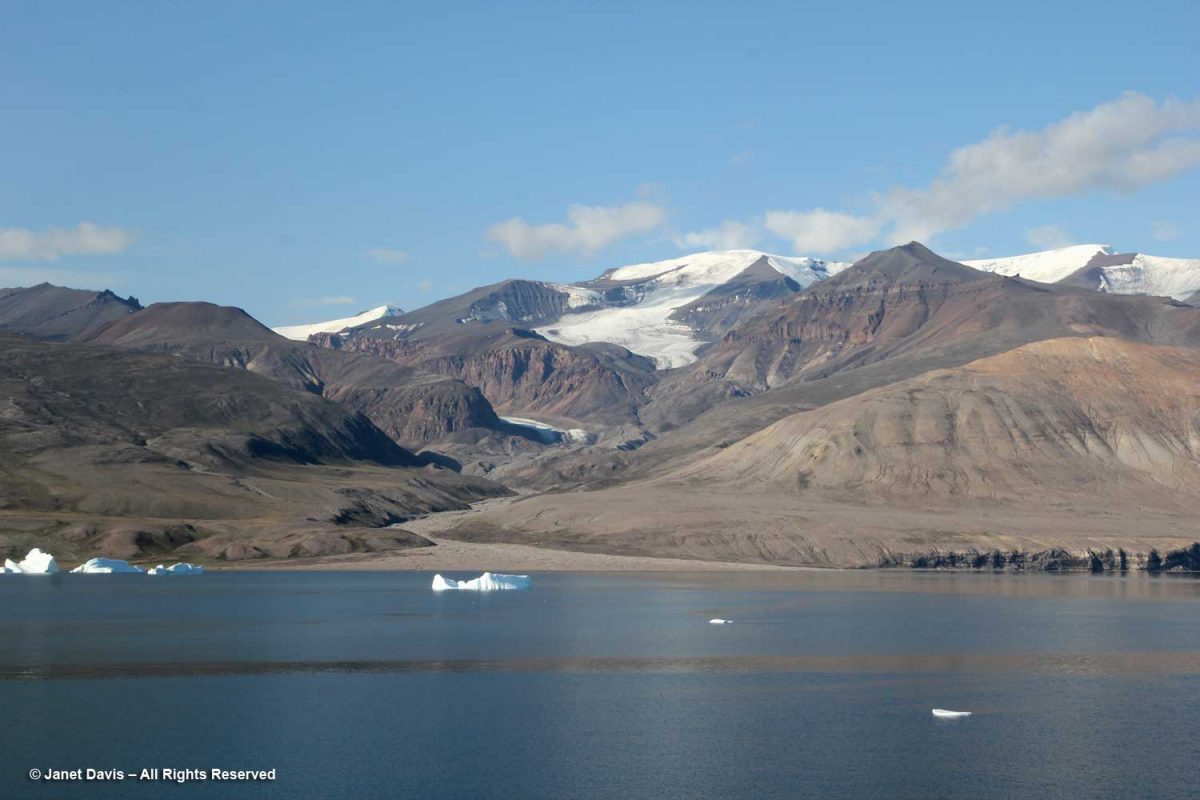
As we sailed, we had a lecture in the lounge from one of Adventure Canada’s Inuit cultural representatives, Aaju Peter. Born in Greenland but a resident of Nunavut for many decades and a recipient of the Order of Canada, Aaju is passionate about the rights of Inuit sealers and has appeared as a lawyer at the EU to speak on the sealing industry and oppose the European ban. In the talk she gave to us, she criticized the anti-sealing movement, claiming that “whitecoats” (baby seals) have not been killed since the 1980s but the poster that anti-sealing groups use is always a bloodied baby seal. She talked about the importance of the traditional industry to her people… “a million dollars might not mean much in Europe”, but to the Inuit of the far north it is a vital source of income. She also asked for volunteers for a fashion show she planned at our first stop, featuring sealskin garments she designs and manufactures.
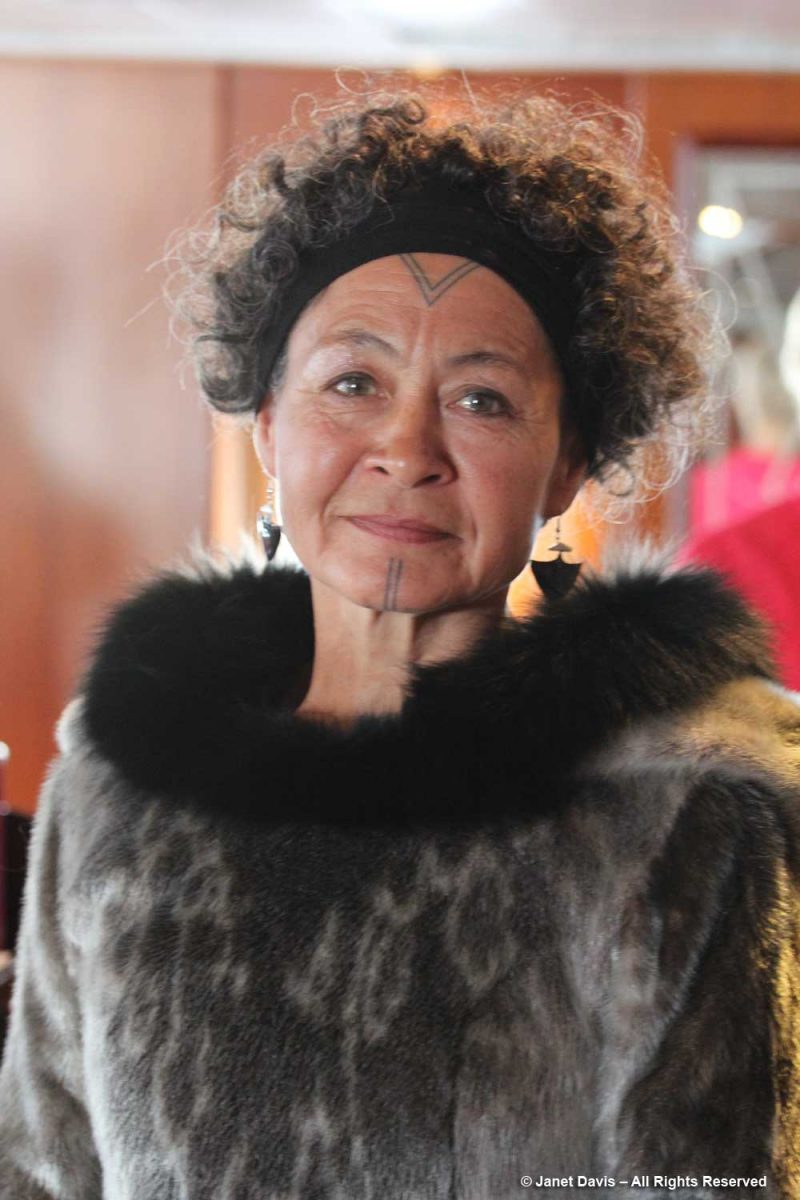
Soon it was time to head to shore in the zodiacs. Qilakitsoq lies in a very beautiful setting on Nuussuaq Peninsula within a small protected cove.
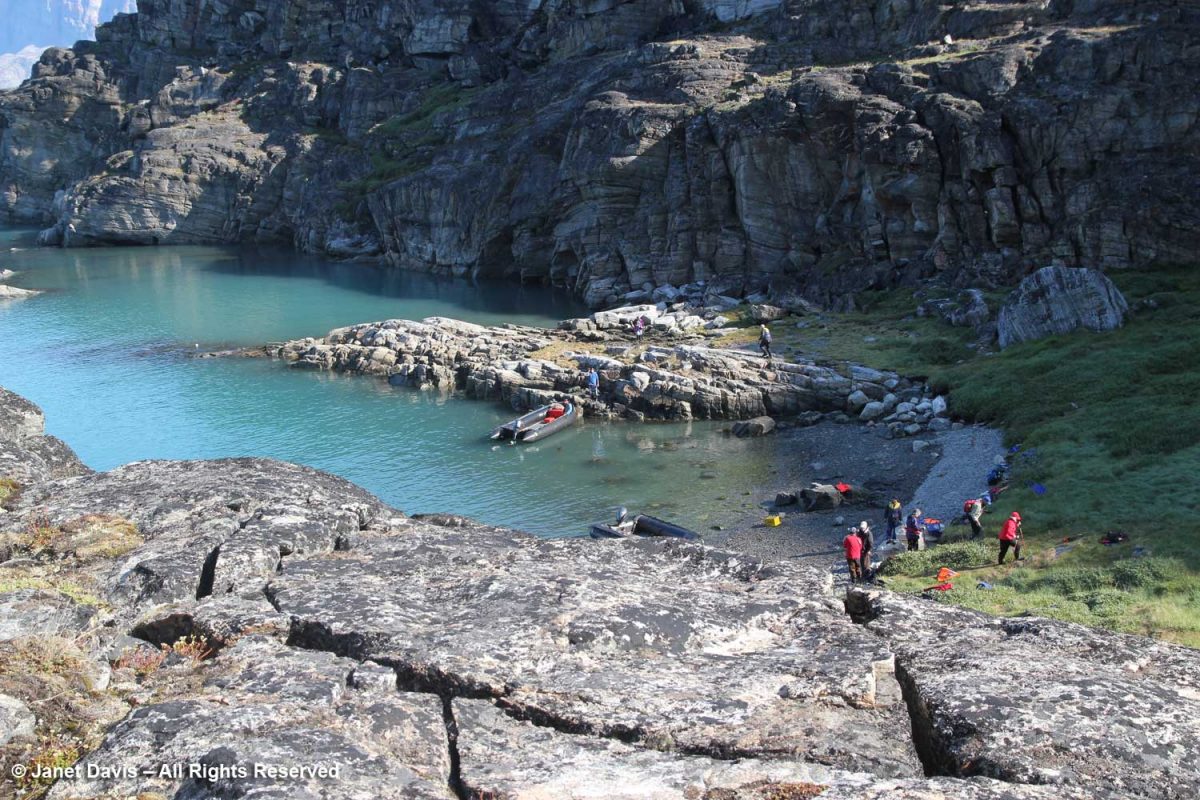
Just a short walk from the shore was a lush meadow featuring mounds where underground dwellings from an abandoned Inuit settlement lie.
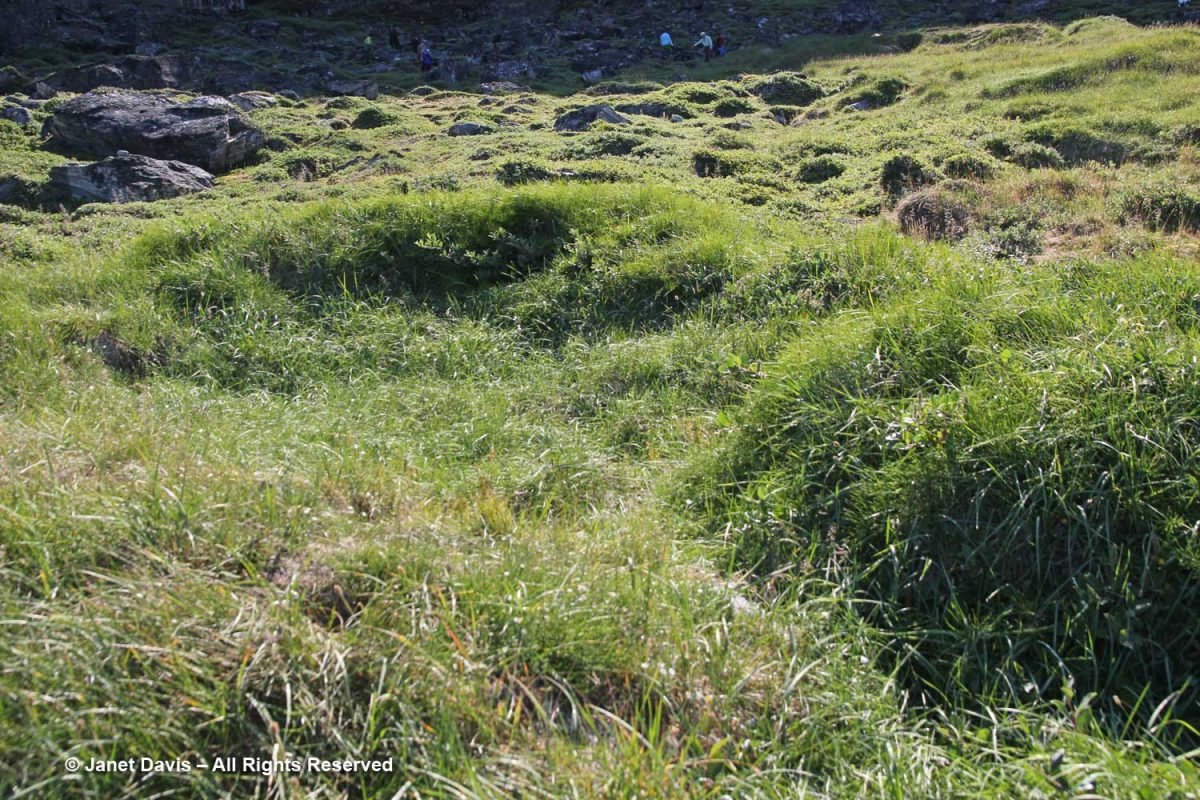
But we were visiting this place to view the rocky grave site of eight of the oldest, well-preserved bodies in the Arctic region. Despite the uneven footing, many of our group made their way up the path through the rocks to the place where in 1972 brothers Hans and Jokum Grønvold, who were hunting partridge, came upon the grave sheltered in a ‘cleft’ under an outcrop. The arrangement of stones seemed curious to the brothers, who turned over a few before discovering the bodies. Thinking there might have been a crime, they replaced the rocks and alerted the police. It would be 1978 before researchers visited the site to find two graves: the first with three women stacked atop each other with a small boy on top of them and a well-preserved baby atop all; the second contained three more women. The women were dressed in intricately-fashioned animal skin garments; surrounding them were valuable animal skins. It is believed that Greenland’s cold, dry climate and this remote location with low temperatures and humidity and protection from rain and snow (which would have caused decay) resulted in natural freeze-drying or mummification of the bodies. And since any modern Inuit inhabitants had long abandoned the site, no one had ever discovered it.
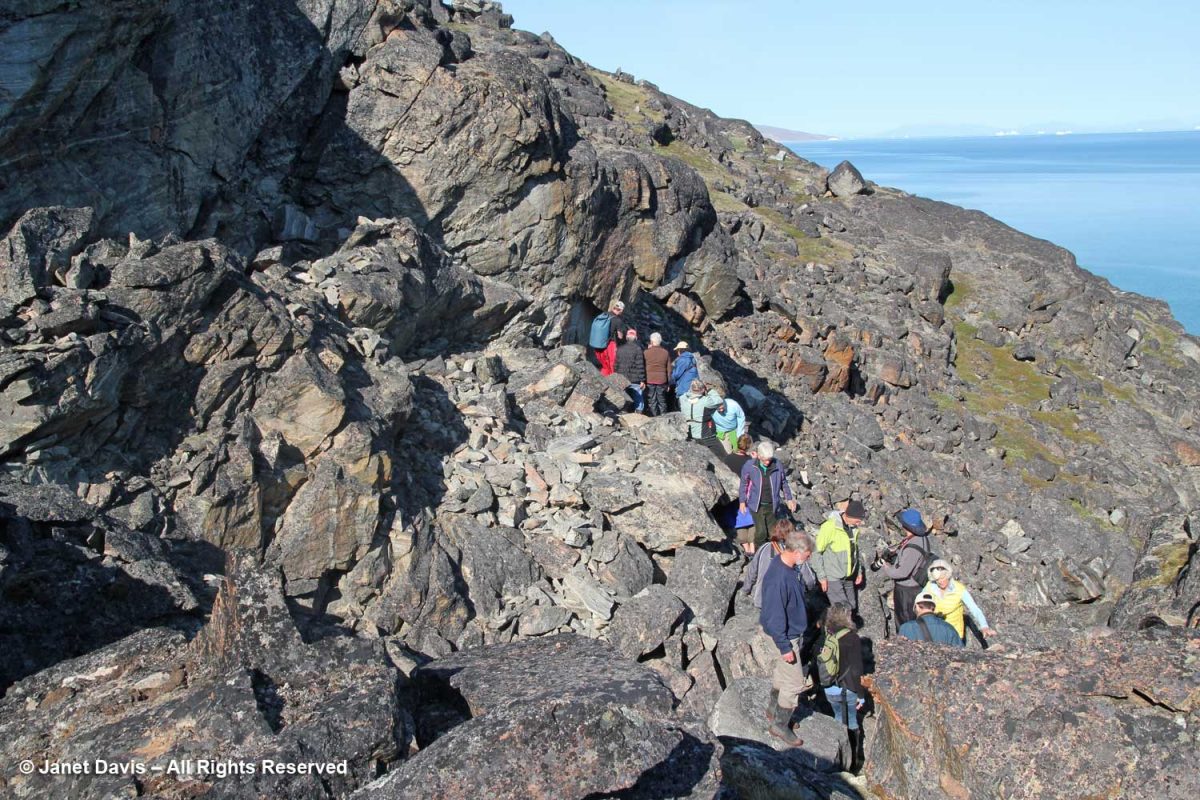
Today, the four best preserved mummies, three women and the 6-month old child are displayed in the Greenland National Museum in Nuuk. The baby was alive when buried, the theory being the traditional belief that the mother and baby should “travel to the land of the dead together”. Through carbon-dating, researchers determined that the bodies were approximately 500 years old, c. 1460 AD, making them part of the Thule (Too-lee) Inuit culture (proto-Greenlander Inuit). Thule people arrived in the region c 1200 AD from present-day Alaska via Thule (now named Qaanaaq, Greenland’s most northerly town), thus the name. Thule culture effectively ended with Danish colonization in 1721. The mummies also yielded abundant cultural and physical information about the era and conditions in which they lived. Of the six women, infra-red lighting revealed traditional facial tattoos on five of their foreheads, believed to indicate puberty and/or marriage. DNA testing revealed their kinship relationships. Analysis of matter from the colon of one woman revealed her diet had included mosses and other plants; isotopic analysis showed that the animal remains in her diet were marine mammals and fish as well as game such as reindeer. Abundant lice were in evidence, including on the food in their intestines. One of the older women had a throat tumour commonly associated with Epstein-Barr virus. The lymph nodes in their lungs revealed high levels of soot, common in people using seal oil lamps in confined spaces. The cause of their deaths was likely contagion or infection.
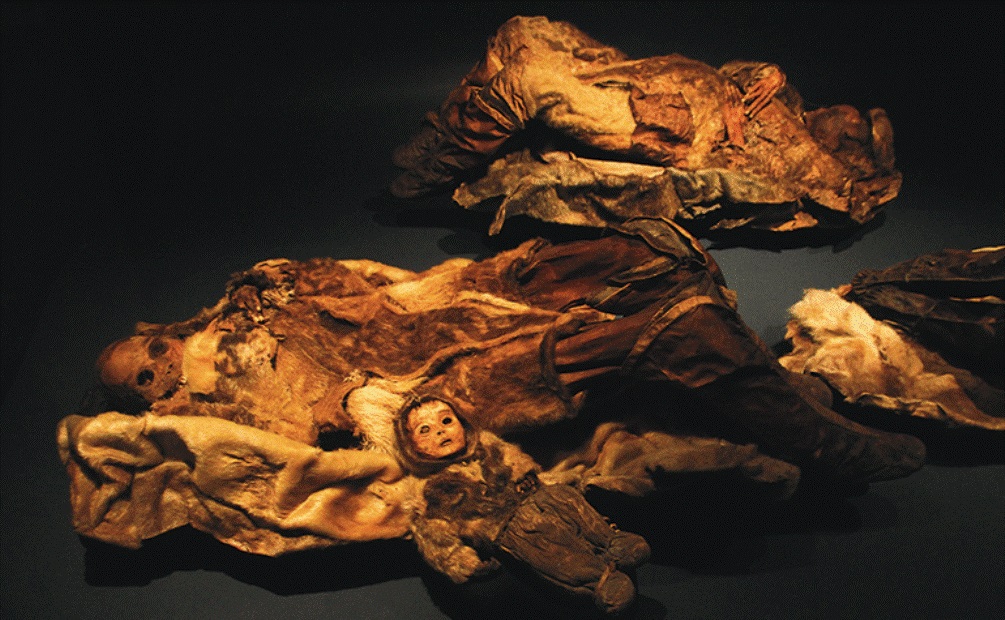
From the top of Qilakitsoq and positioned beside an inuksuk, we could see Uummannaq Mountain or “Hjertefjeldet”, as the Danes called it, the heart-shaped peak that overlooks the town of Uummannaq, where we would travel next.
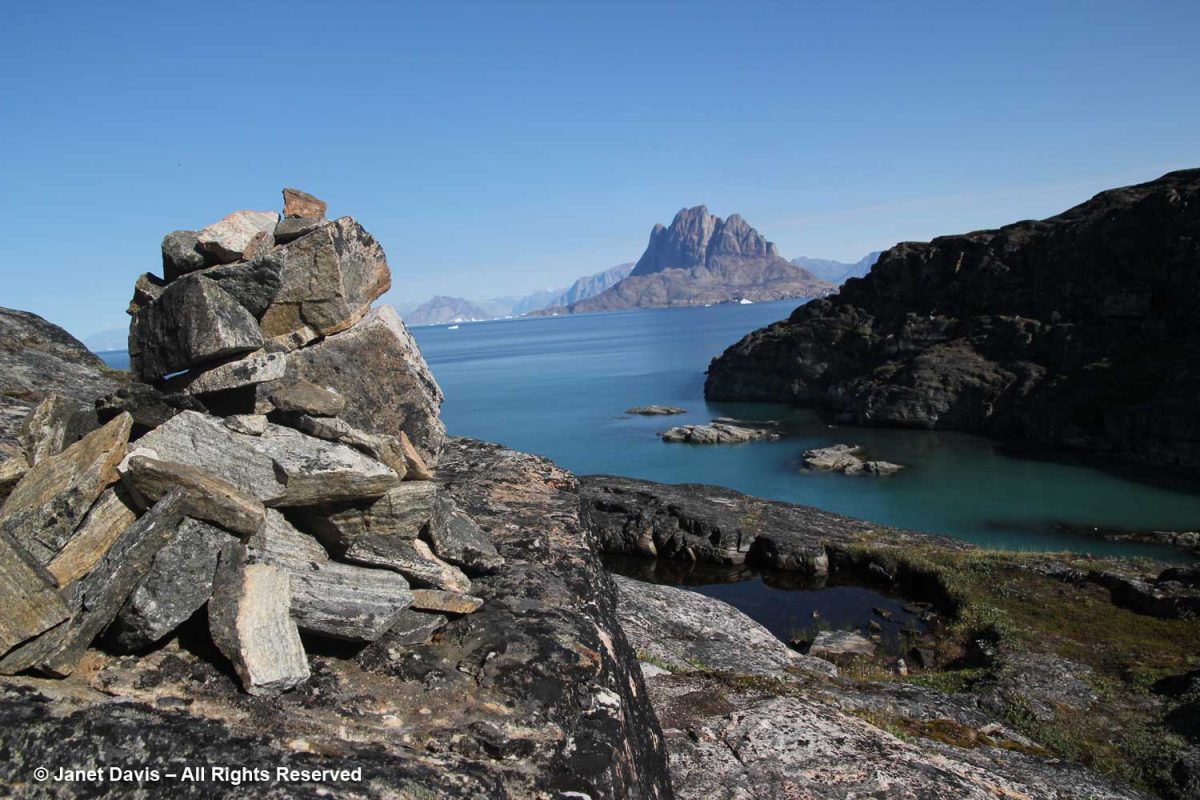
And there was the MV Sea Adventurer awaiting our return by zodiac. Incidentally, this single rock is also a traditional ‘inuksuk’.
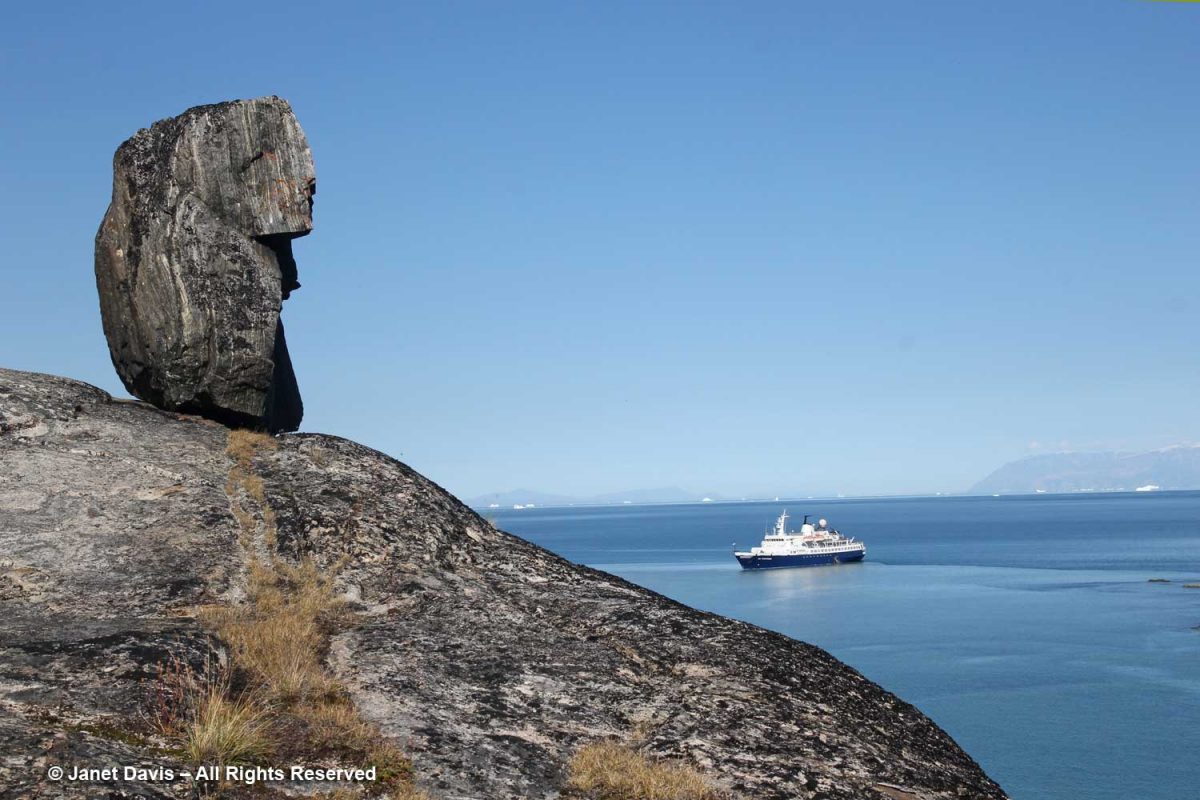
Gazing around, I saw nodding saxifrage (Saxifraga cernua) tucked into the rocks….
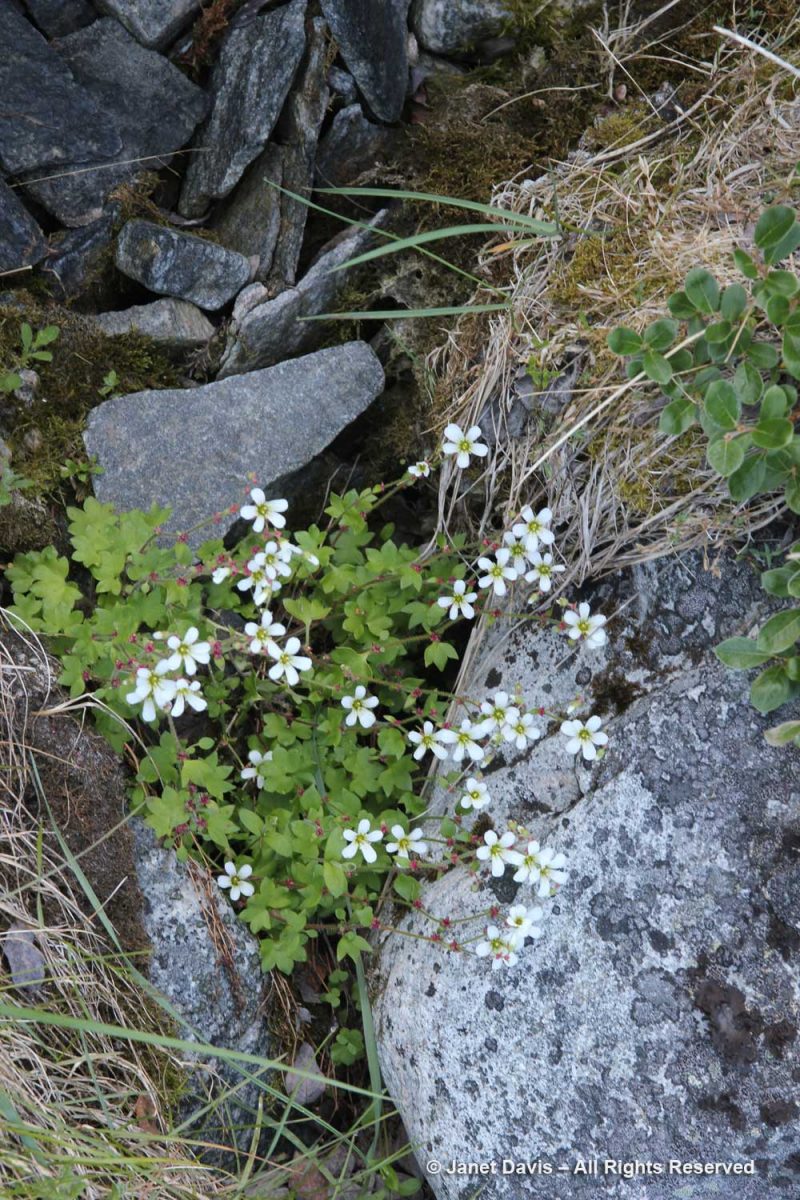
…. and a beautiful large-flowered wintergreen (Pyrola grandiflora) too.
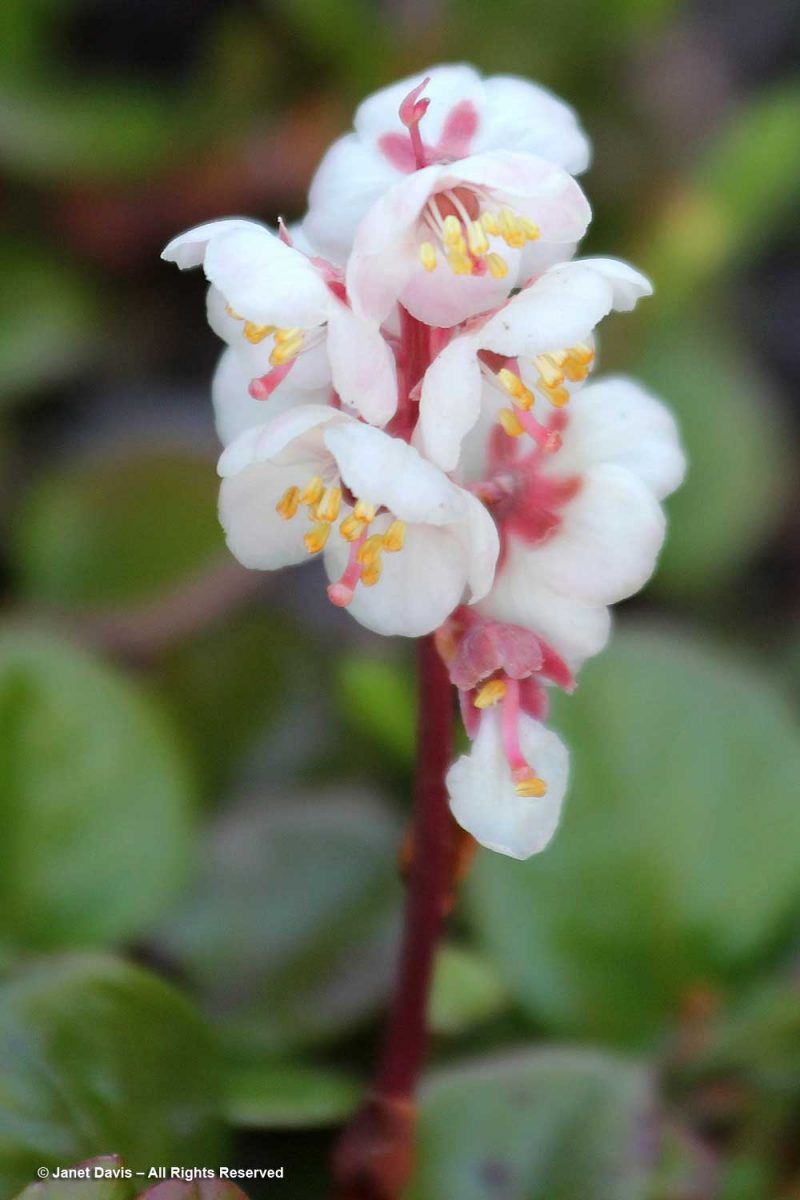
Looking to the beach below, we saw an Arctic fox (Vulpus lagopus) prowling about – which I’ve magnified a little here.
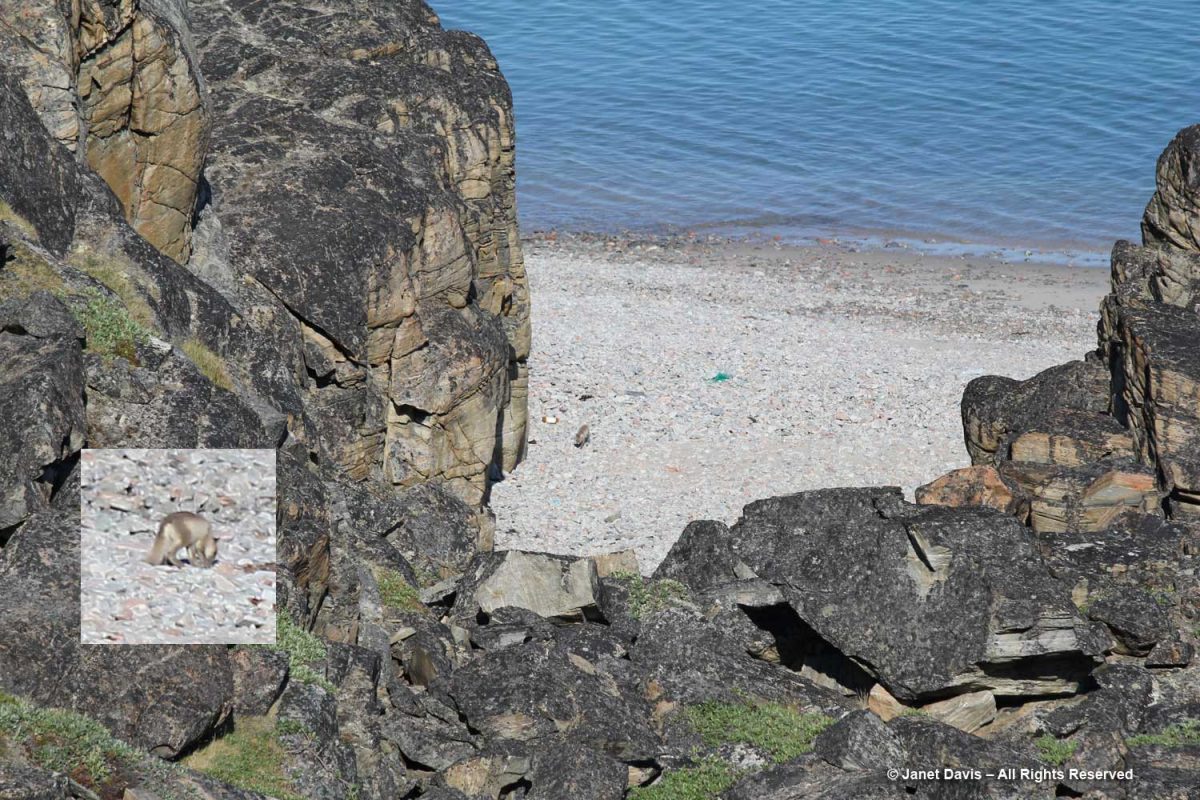
And there was a school of fish near the shore, likely cod, I was told.
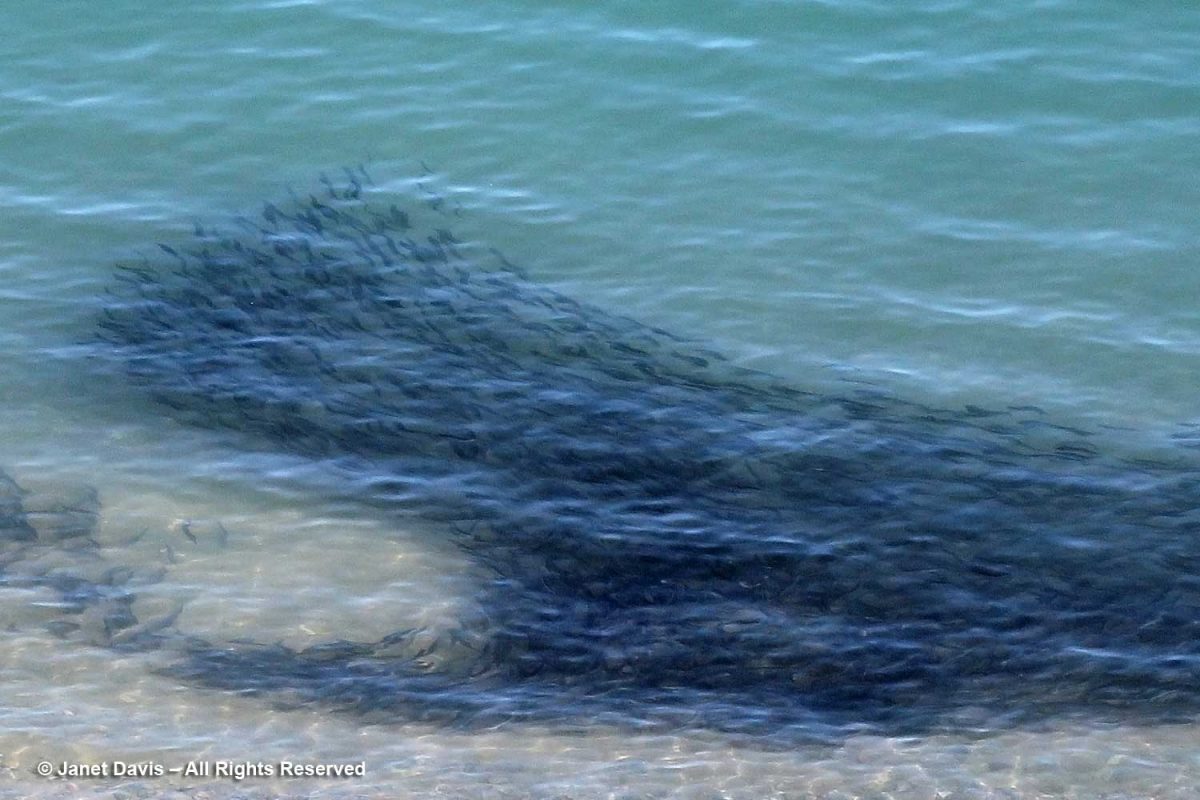
Then it was time for our sealskin fashion show in the meadow. Aaju Peter wore one of her own designs….
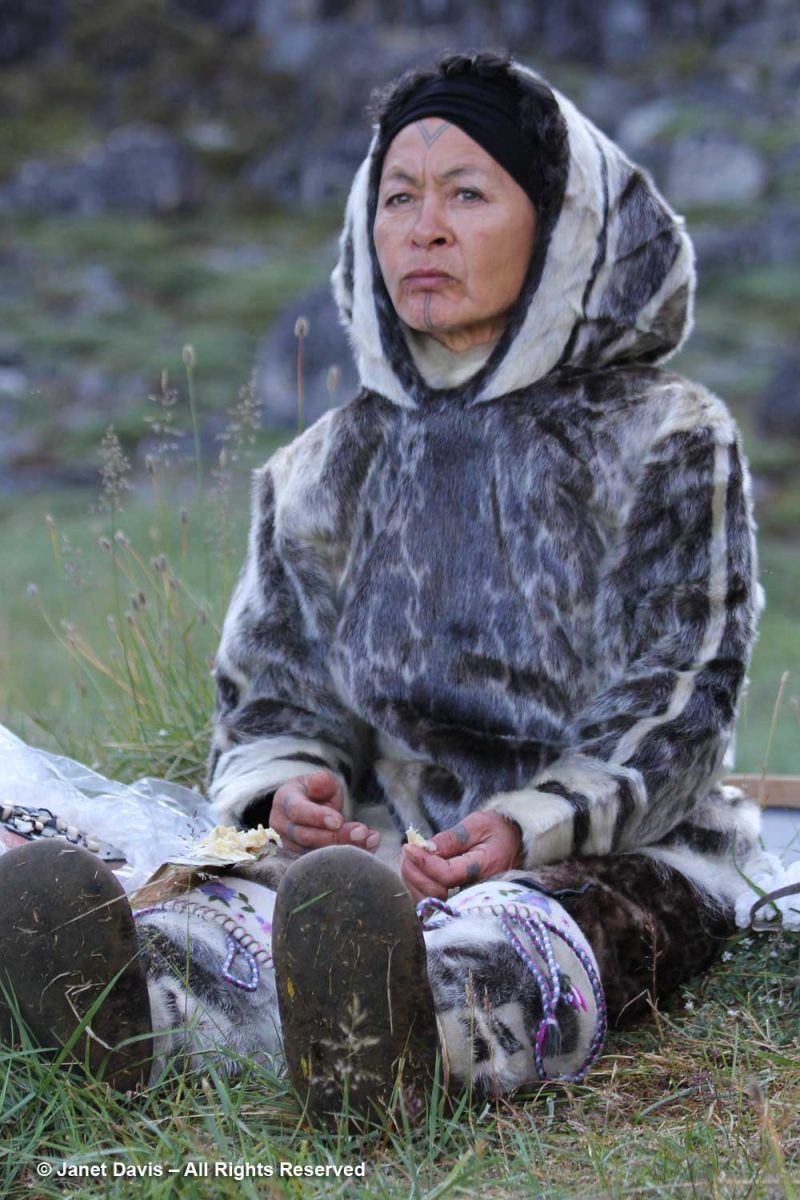
…. and two of the passengers modelled her garments while demonstrating the traditional Inuit drum and mallet.
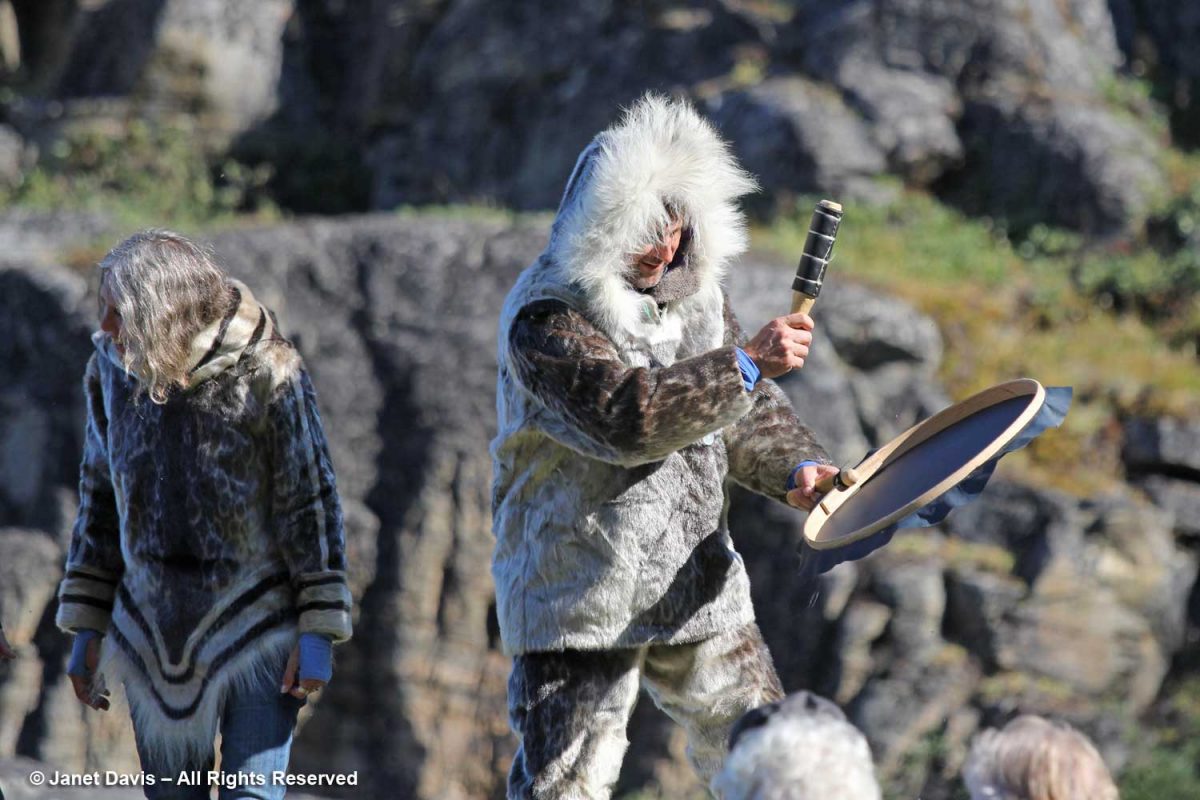
Zodiacs took us back to the ship to sail to our next stop, Uummannaq, a short distance away. The shallow water here was as blue as any we’d seen on the trip so far and the day was warm enough to make it seem almost tropical.
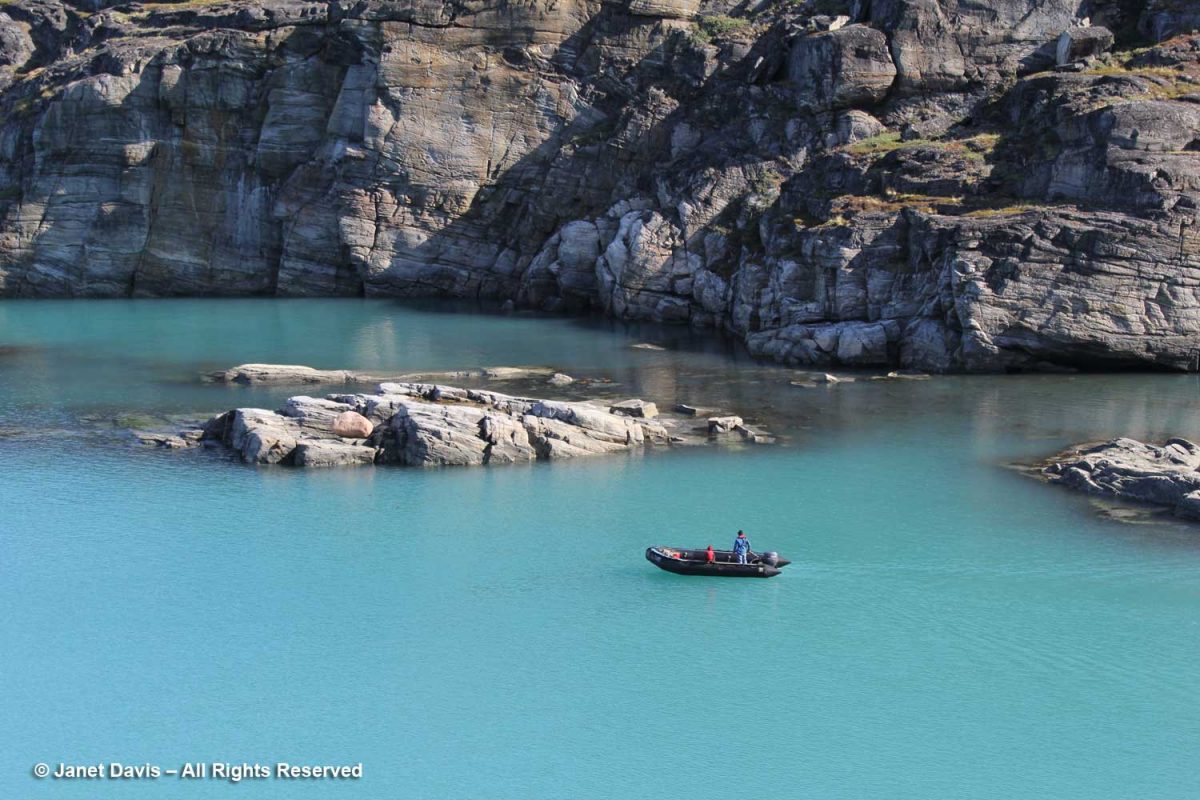
With just 1,407 inhabitants (2020), this little village nestled on a small island under the jutting, heart-shaped, 1170 m (3839 ft) Uummannaq Mountain is the eighth-largest town in Greenland. Located 500 miles north of the Polar Circle, its primary industries are fishing, hunting, canning and marble quarrying. But that isn’t really why it’s become famous.
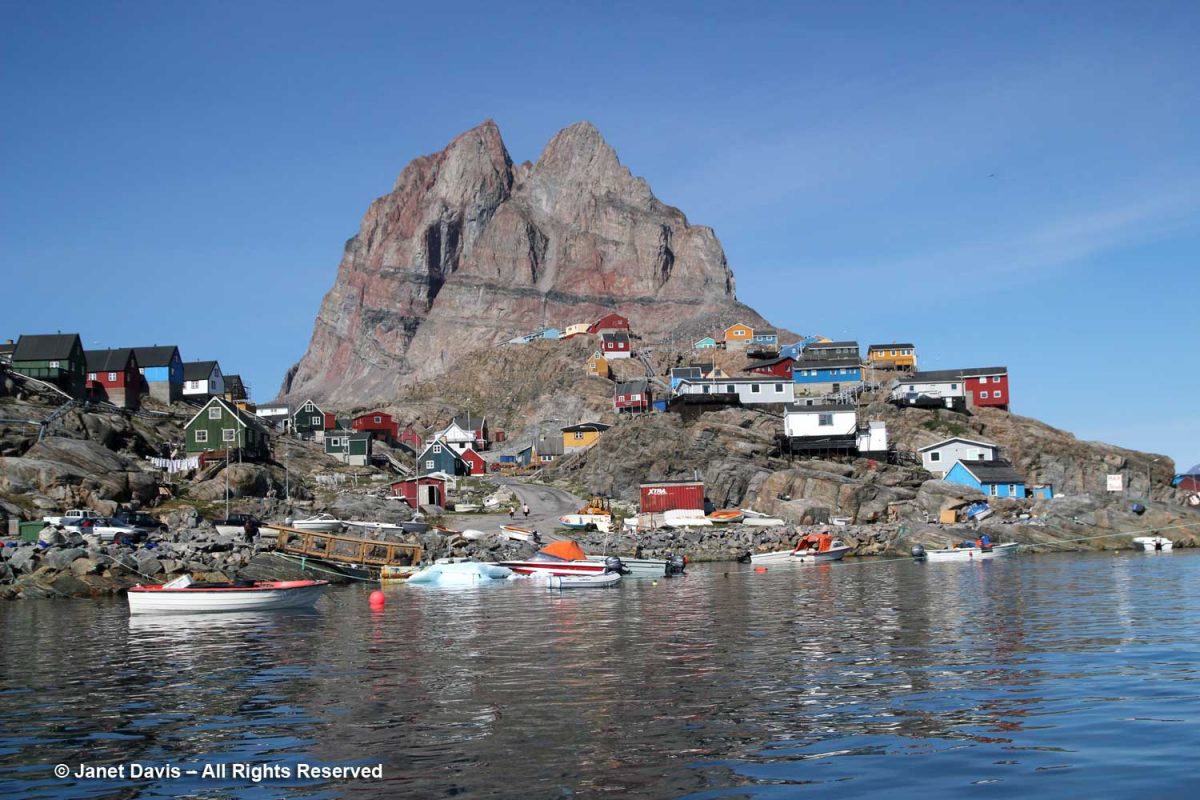
And though the big icebergs dominate the waters in front of Uummannaq, that isn’t why it’s become famous either.
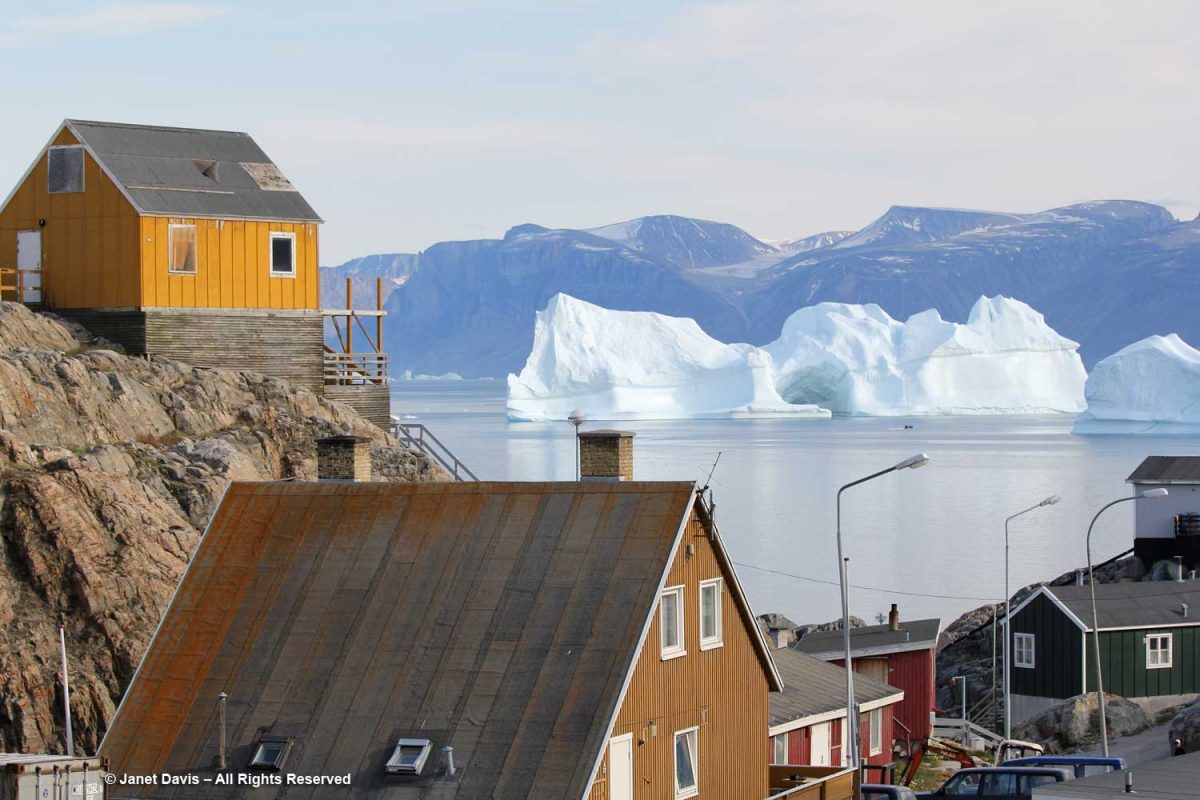
This is really why it has earned its fame: the remarkable story of the children from The Children’s Home of Ummannaq. We began our visit with a special concert by the children’s orchestra, featuring Venezuelan music teacher Ron Davis Alvarez conducting. When we were there, Ron was volunteering under the aegis of Venezuela’s El Sistema music education program. Founded in 1975 under the name Social Action for Music, it now operates around the world. The children in the orchestra that day were among the 23 residents of The Children’s Home. According to the website: “These kids all come from families with severe social problems. They only have a little contact with their relatives, some are even orphans and others are mentally and/or physically handicapped. At The Children’s Home, we try to help the kids to overcome the traumatic experience of their childhood by educational activities, projects, therapy groups and resocialization. The educational and therapeutic activities keep the Greenlandic culture at the centre while staying open to the world. The activities include hunting and fishing projects, boat trips hiking and dogsled expeditions, art and music therapies, video workshops, camps, education and summer holiday travels, etc.”
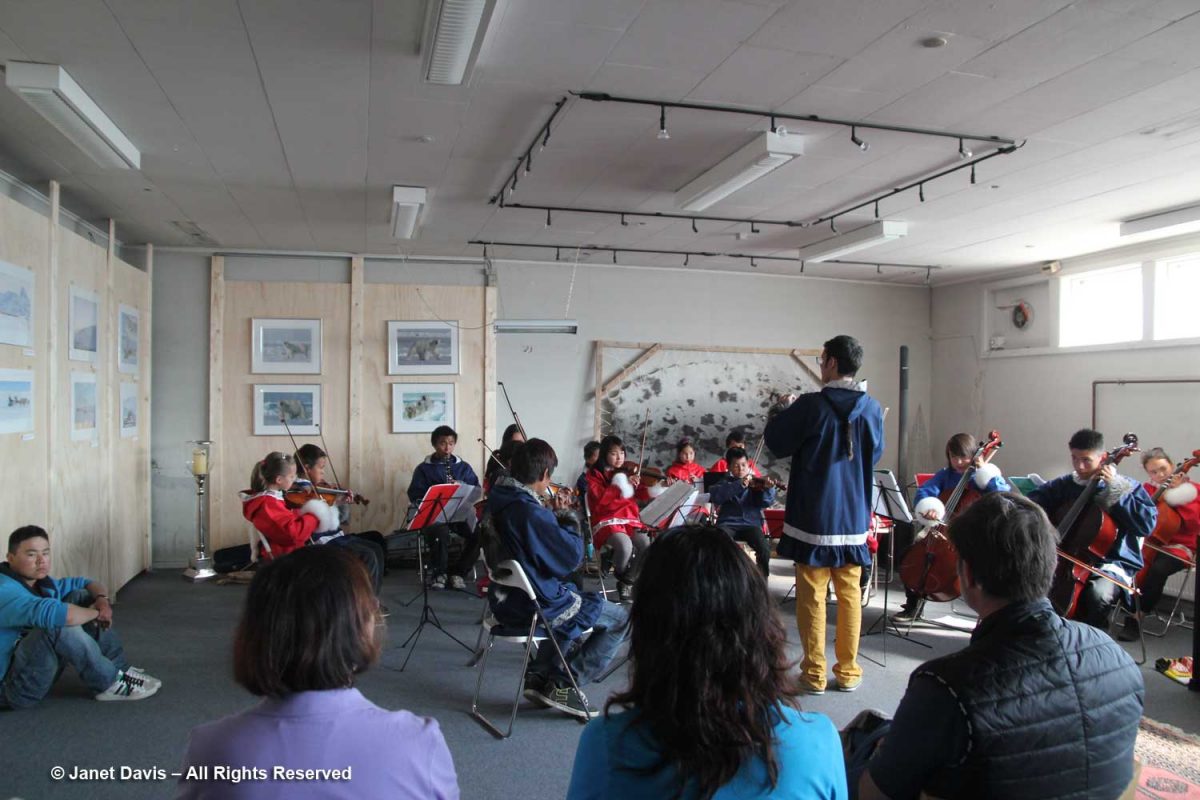
It was wonderful to watch the children in their traditional costumes playing their instruments so proficiently.
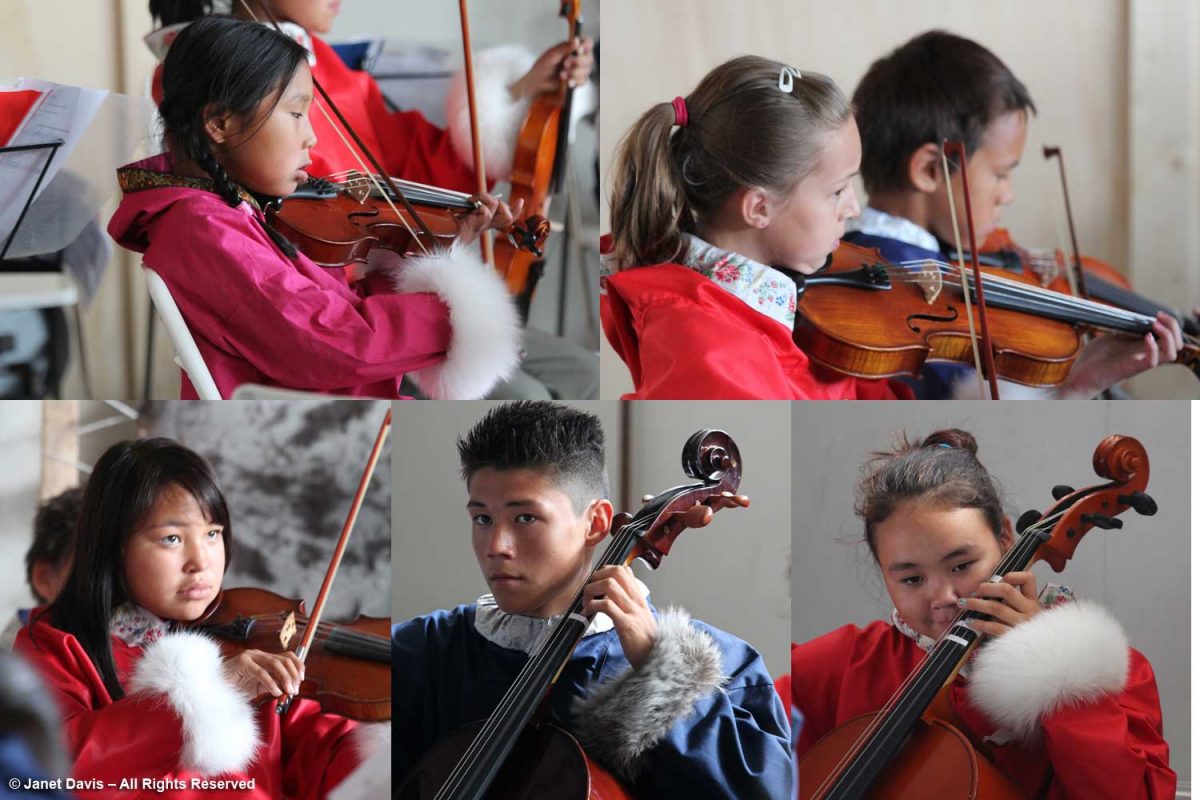
The concert was watched by Ann Andreasen, below, principal of The Children’s Home and director of the Uummannaq Polar Institute. She had boarded the ship that morning to talk to us a little about what she does here in Uummannaq, beginning with her involvement with the home. She also co-produced and acted in a film called “Inuk“, which was selected as the Greenlandic entry for the 2013 Academy Awards. After the musical presentation, we would walk to the Blubber House movie theatre for a screening of scenes from the film. Inuk’s screenwriters were inspired by the Children’s Home of Uummannaq, and had already written two documentaries with Ann Andreasen’s assistance. The film is a coming-of-age story about a 16 year old Inuk who is torn between the violence of his alcoholic parents and his dreams of creating an Inuit rock band. When he is sent to a foster home in the north, his foster guardian sends him to a bear hunter to learn wisdom. Inuk is initiated into manhood via a dogsled journey to the seal hunt – a journey on which he also meets a young woman.
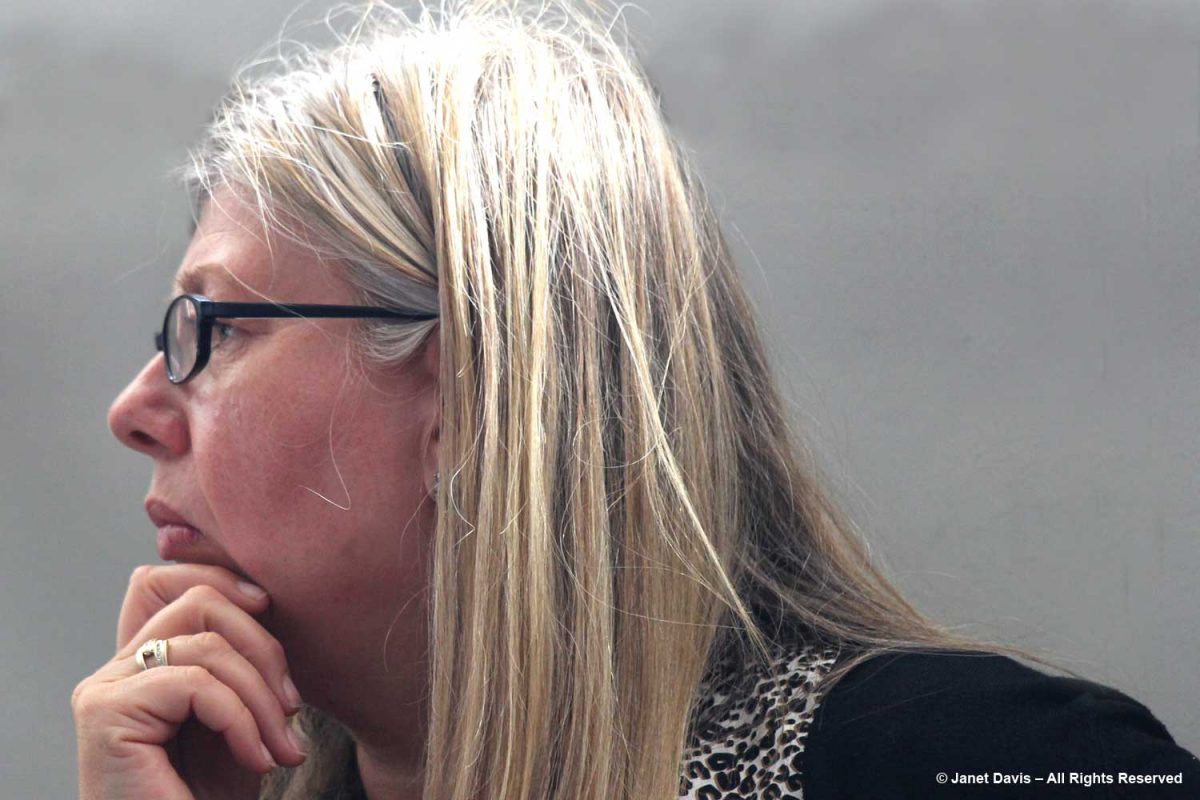
After the children finished playing, it was our turn. Adventure Canada’s entertainer Thomas Kovacs gave his best Elvis imitation..
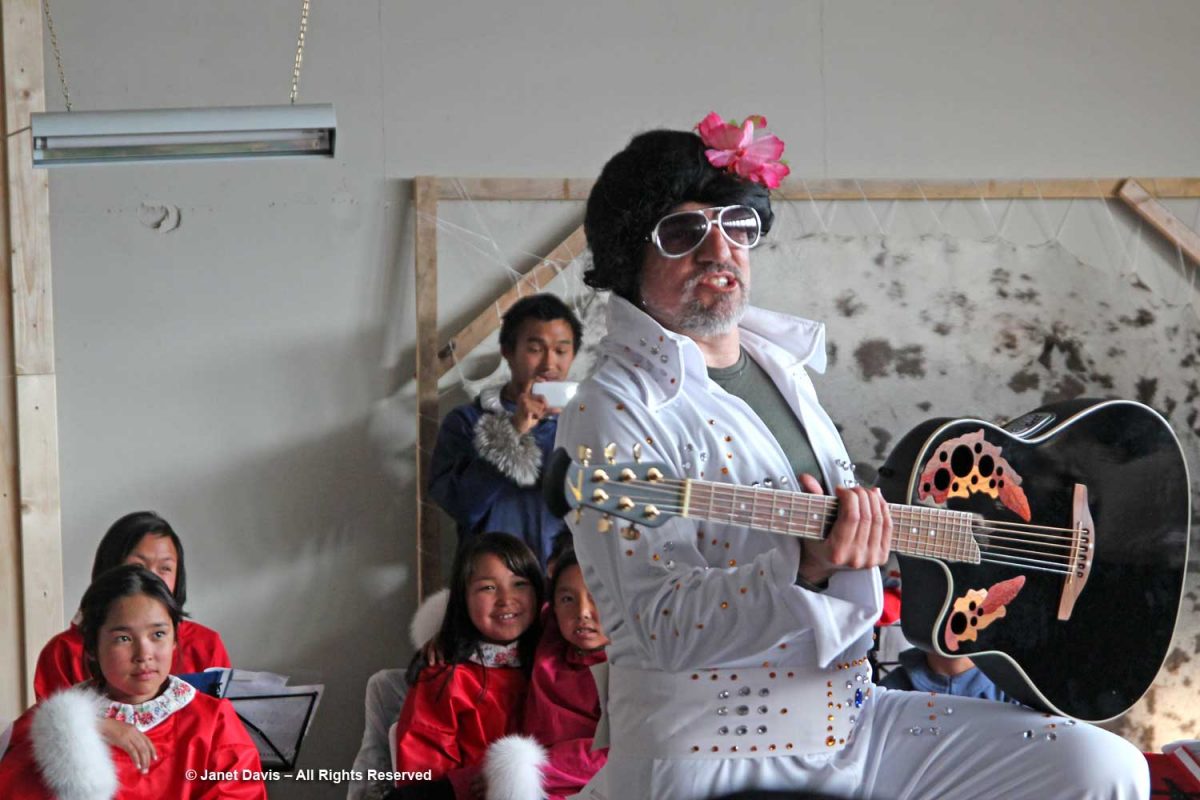
Then Aaju Peter led us in three songs (including Amazing Grace) in the Kalaallisut dialect that we had been practising with her on the ship. We didn’t win any awards, but the kids seemed to like our sincerity anyway
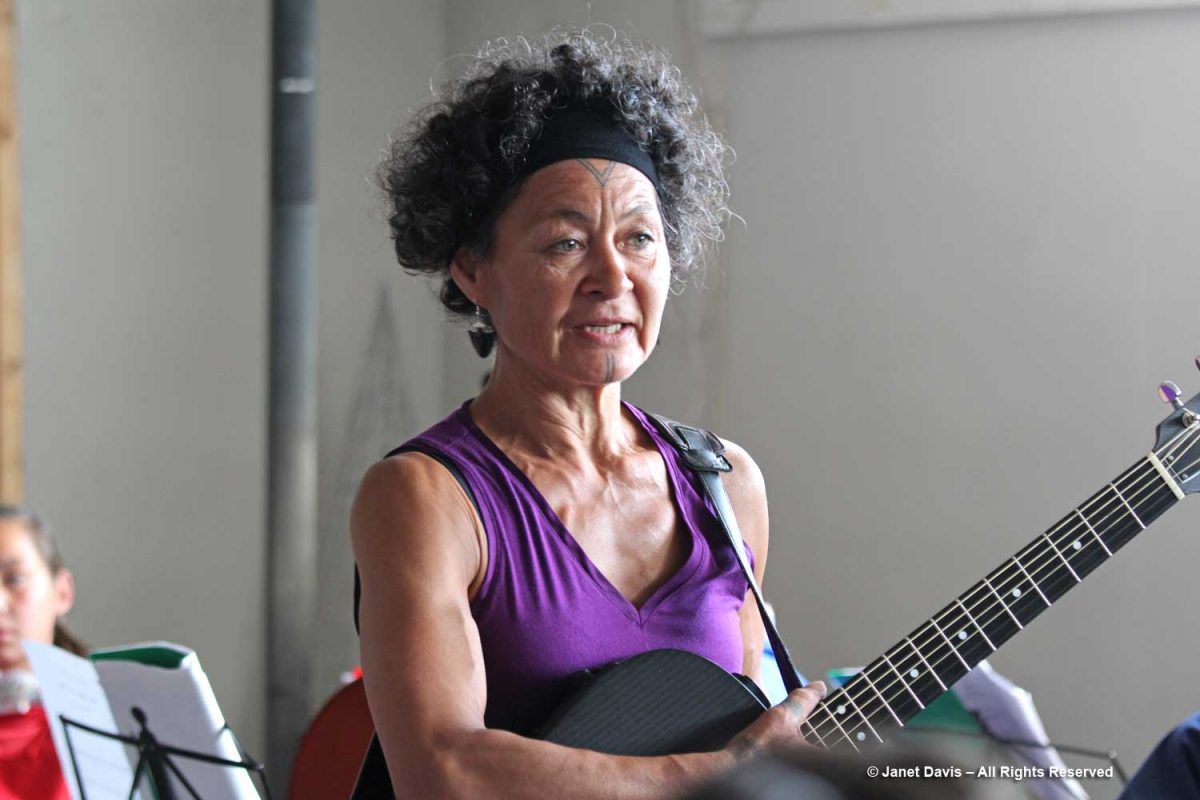
Following a very pleasant reception at the home, we were free to tour the town for a few hours. There’s never any doubt about the traditional mode of transportation in Greenland…..
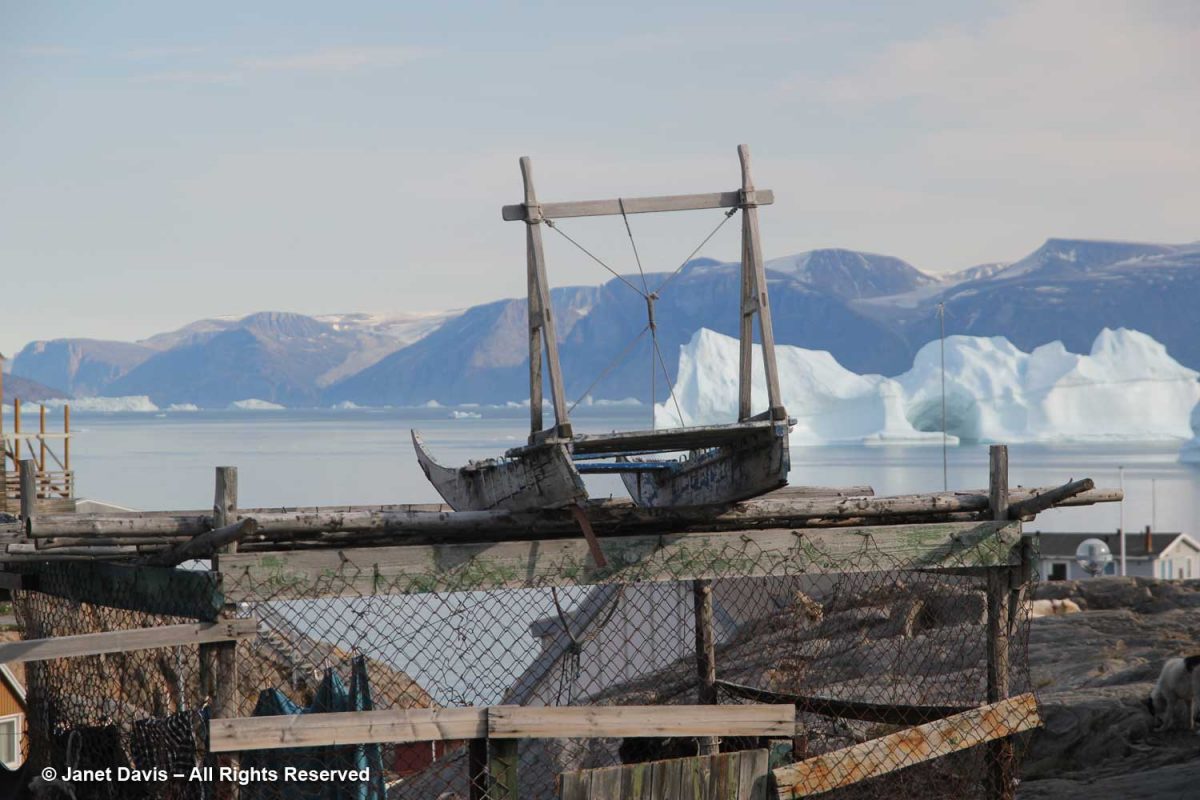
….. including the beautiful sled dogs.
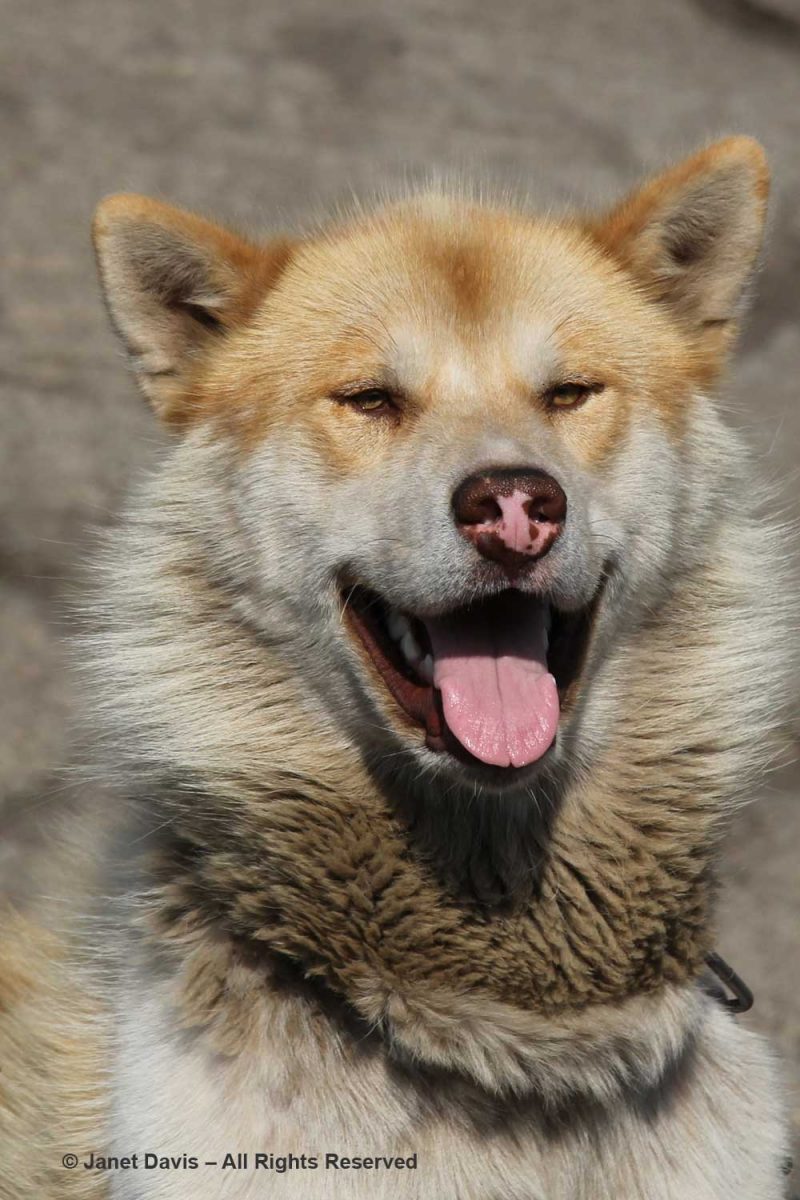
We saw dried fish hanging near their kennels, part of their diet along with regular dog food and seal scraps.
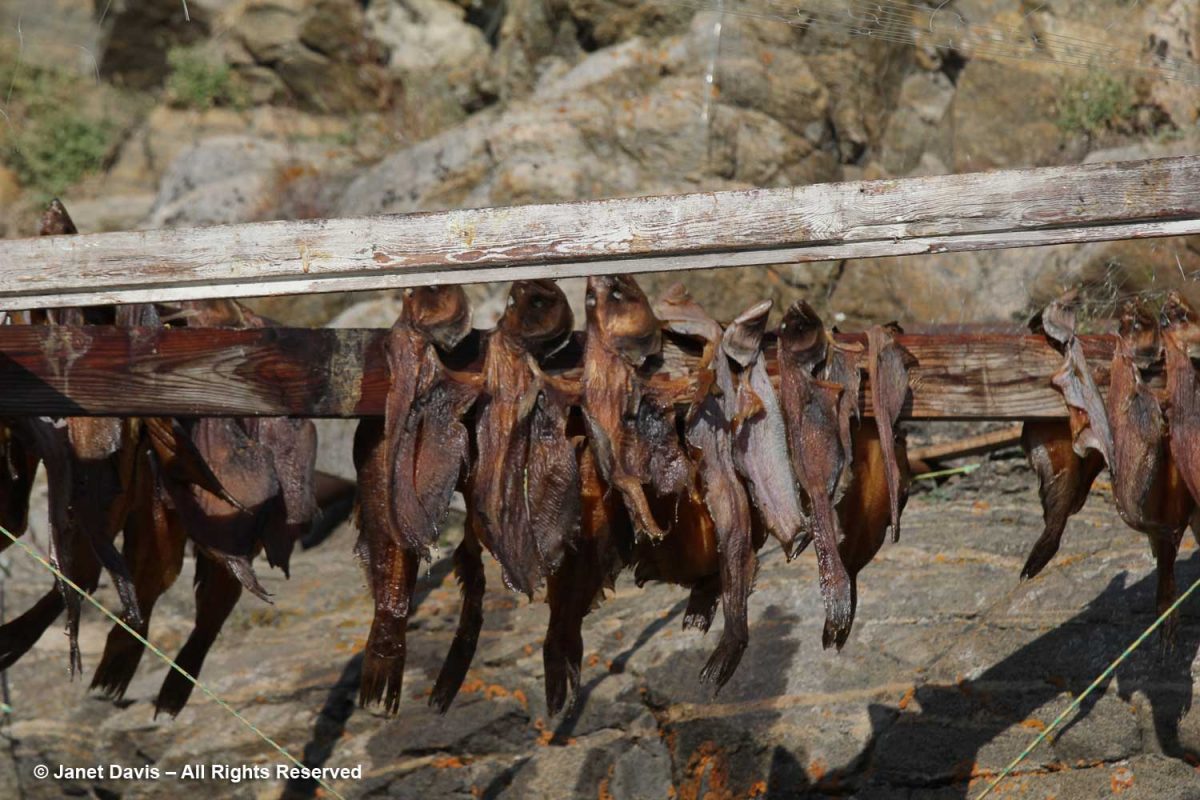
The big icebergs come from the Ilulissat Icefjord, which we visited the previous day.
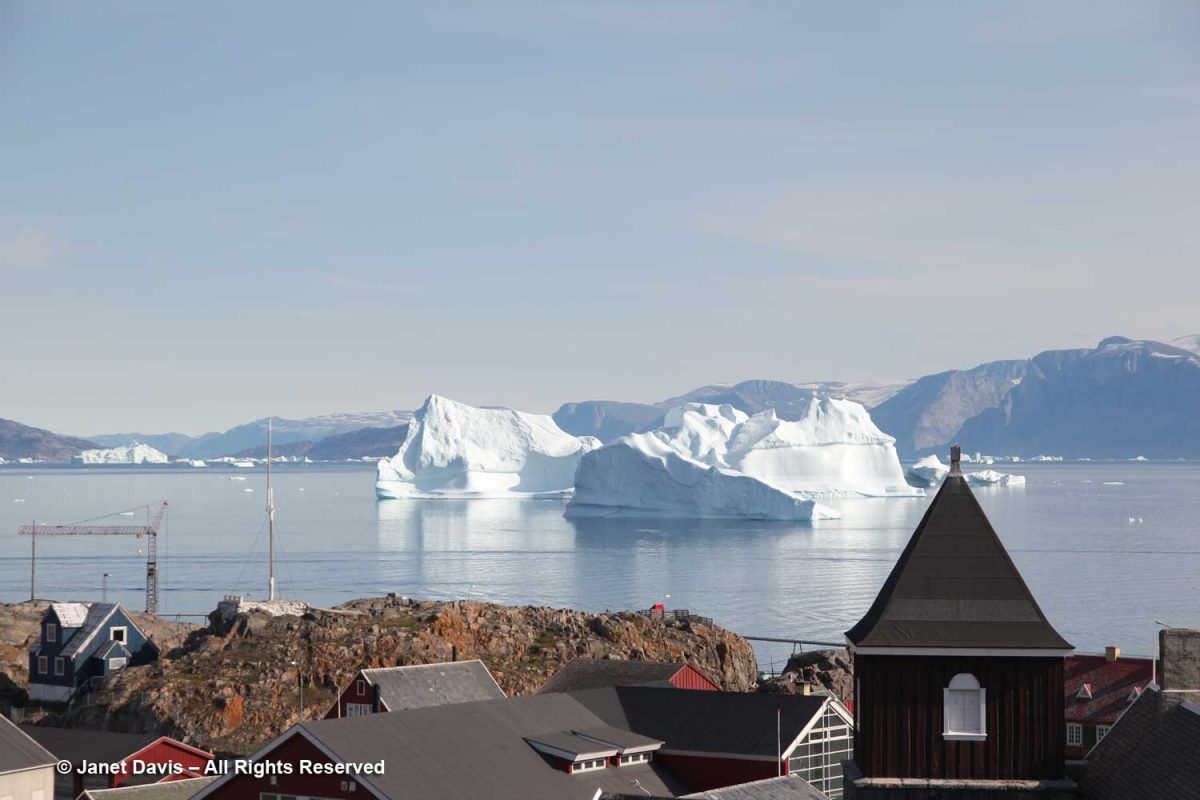
This was one of the prettiest scenes on our trip. The ever-present false mayweed or seaside chamomile (Tripleurospermum maritimum) growing through a sled.
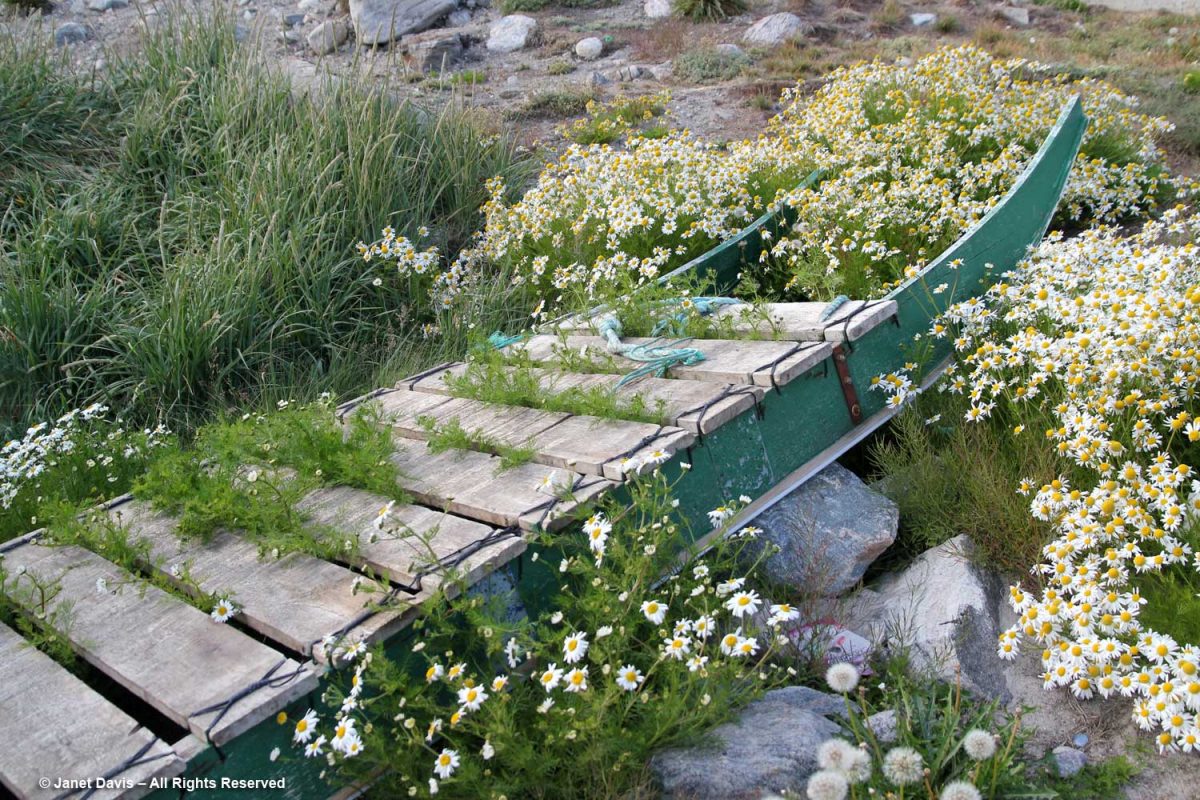
And look who came to pose! Sled dog poppies are allowed to run free until they reach a certain age.
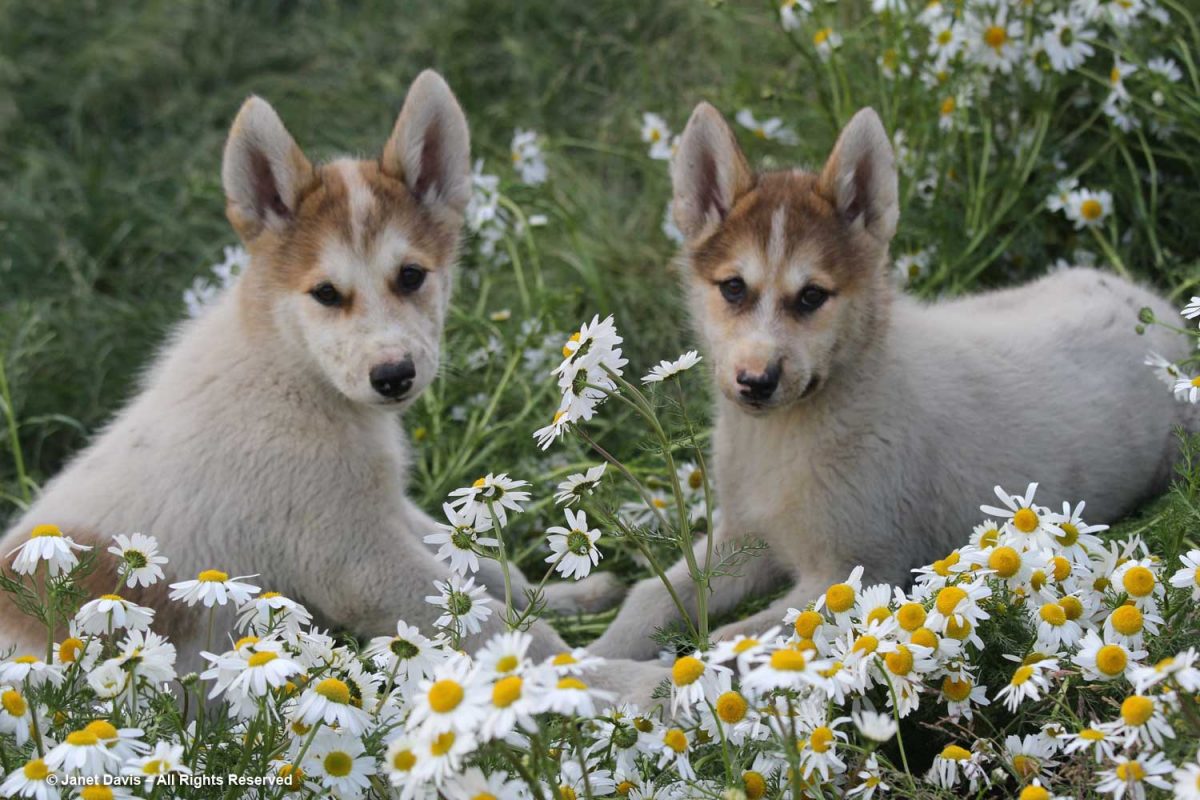
I came upon another little dried-peat-and-stone house near the harbour. This one was built in 1925 and actually occupied by an old women until 1989.
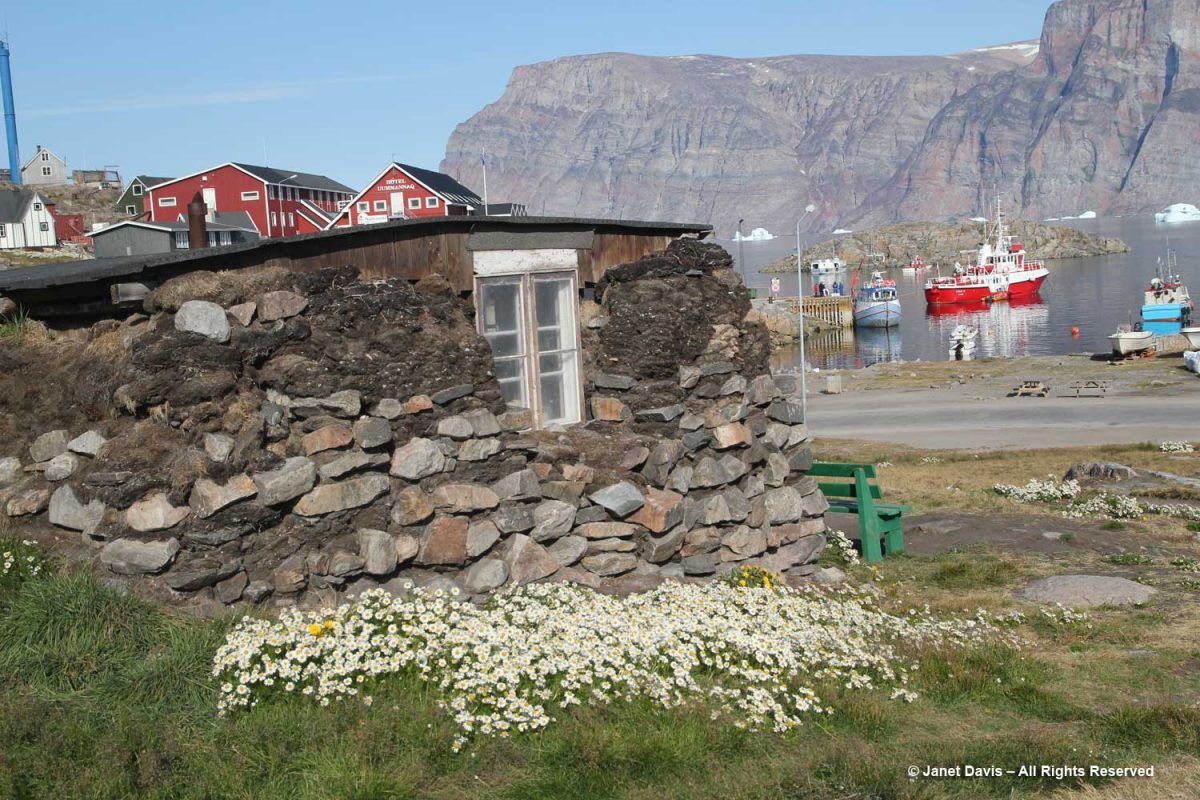
It’s been maintained in the very same state as the day she left.
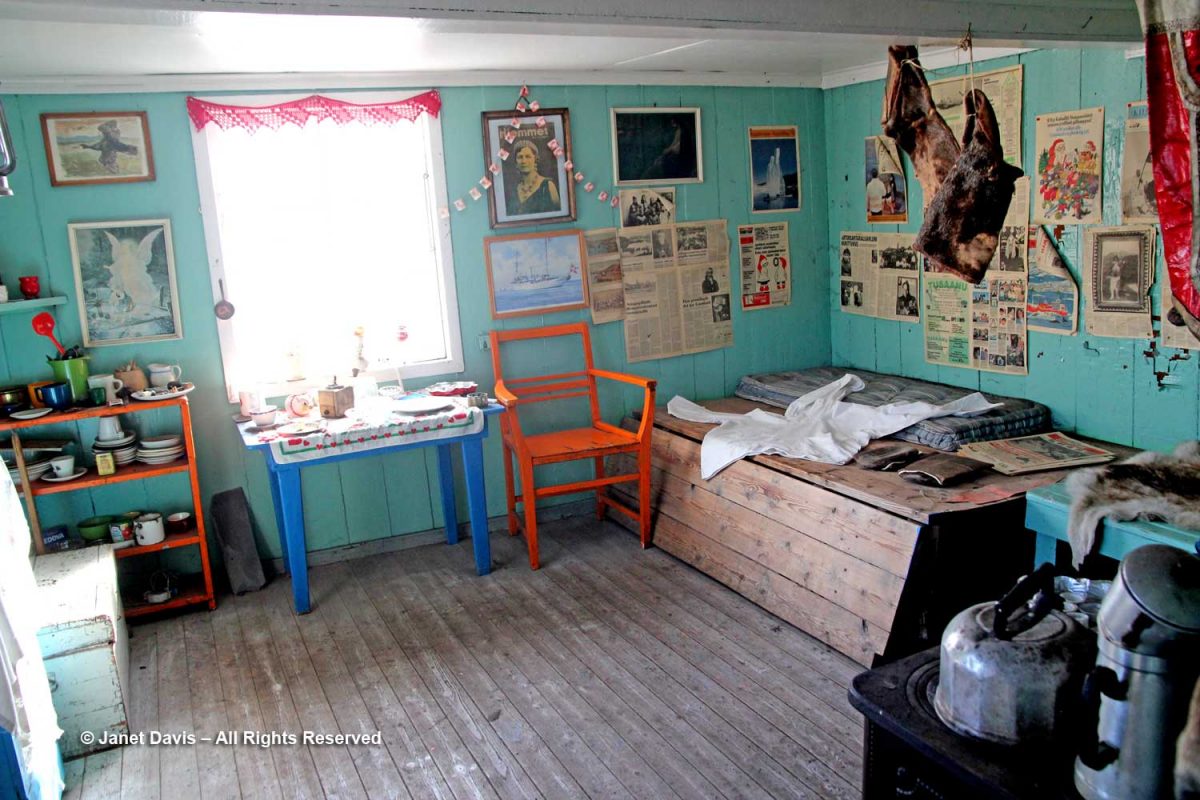
Nearby was a unique open air exhibit of turn-of-the-century historic photographs of Greenland Inuit by polar explorers Arnold Heim and Alfred de Quervain, sponsored by the Ummannaq Polar Institute. This young Uummannaq woman, Karen, worked as a carrier and cook on de Quervain’s first expedition in 1909, which I spent hours reading about one night as I prepared this blog. Be warned: it’s quite addictive to lanch into this amazing account.
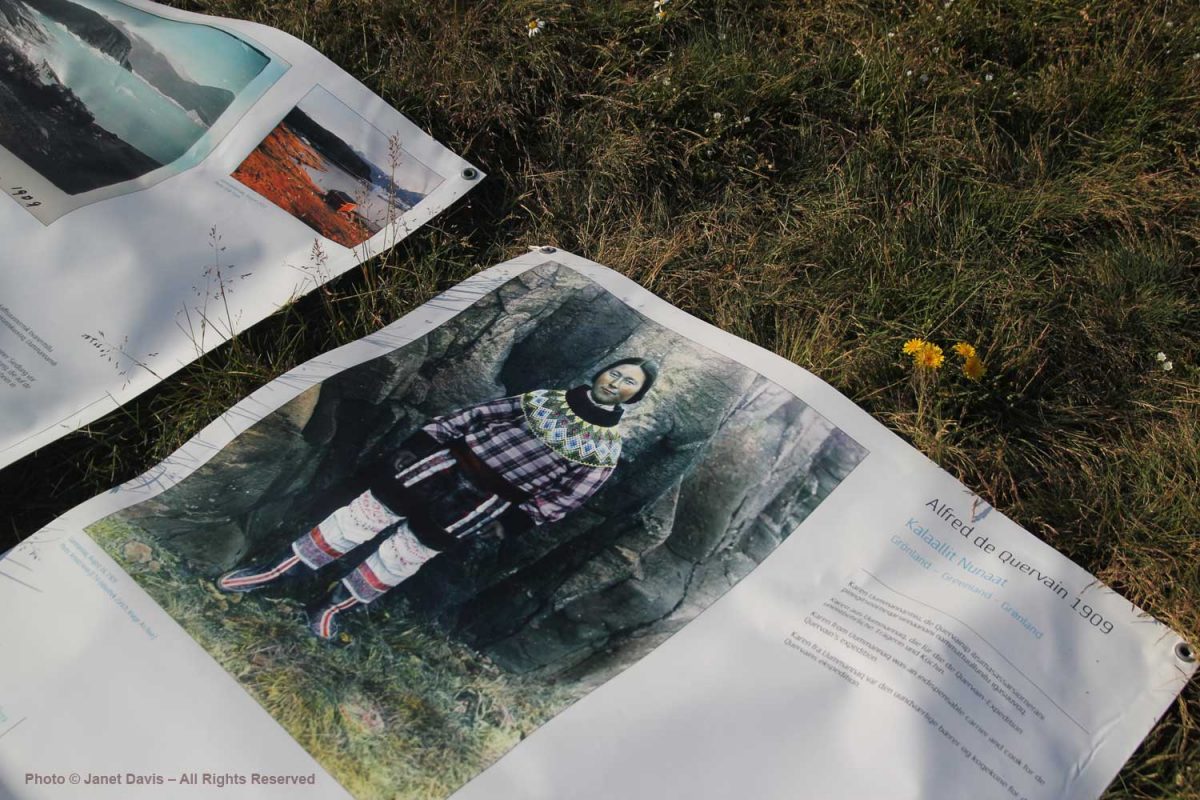
Heading back to the town dock, I was impressed with the fish boats anchored below the mountain’s formidable wall.
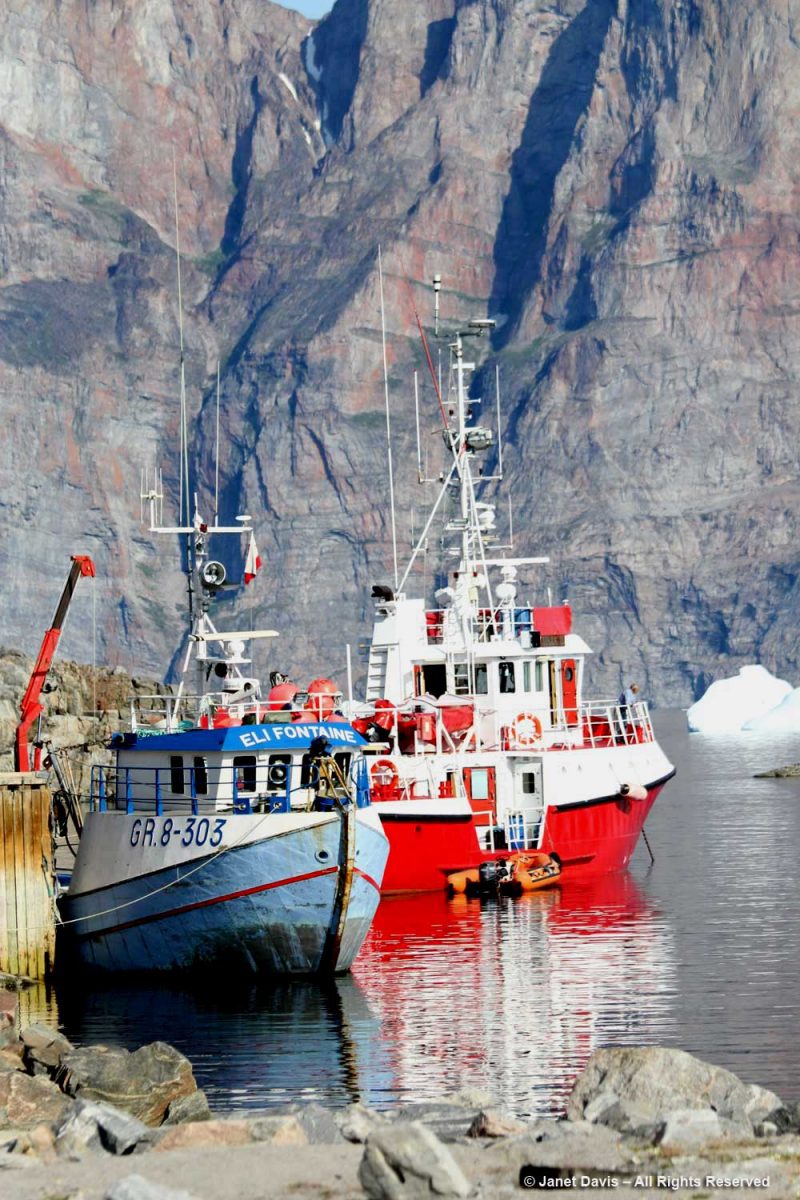
More fish boats lay at anchor in the protected harbour.
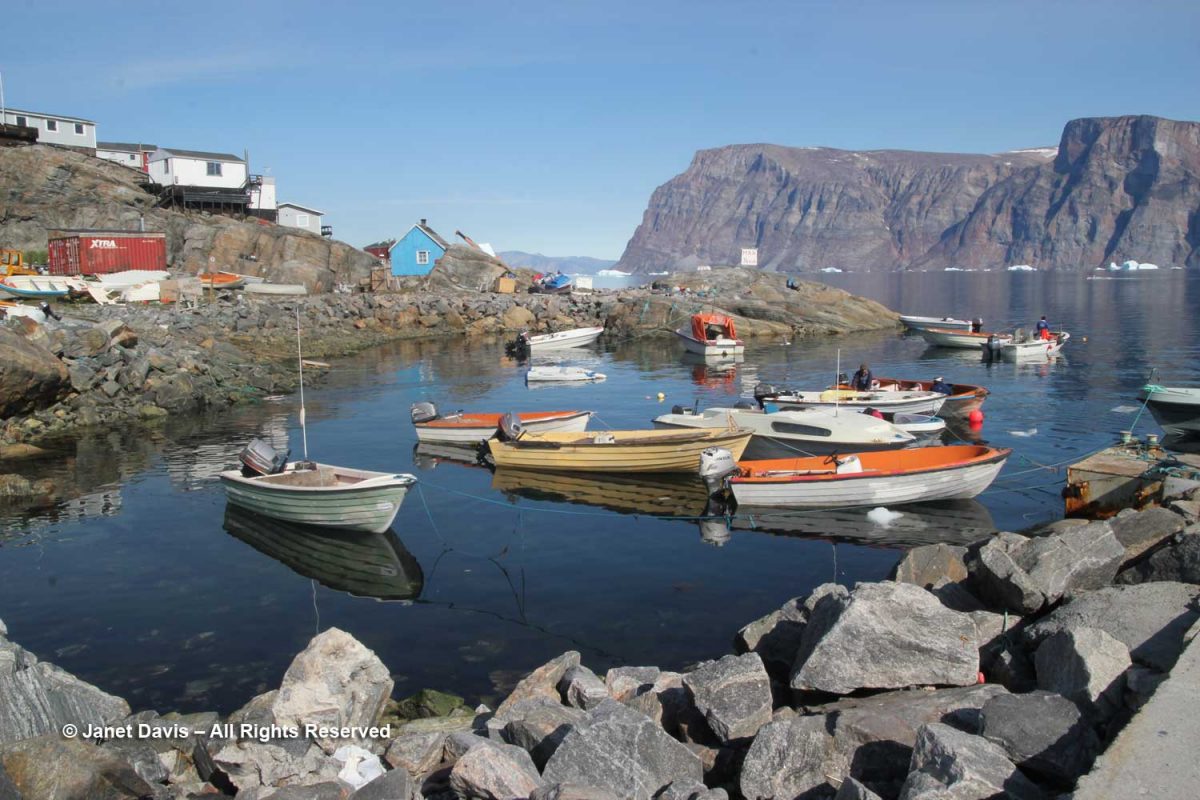
At the dock, a family unloaded its catch. Note the young mother with her baby carriage and the sweet smile on her face. She was wearing a waterproof survival suit like her husband.
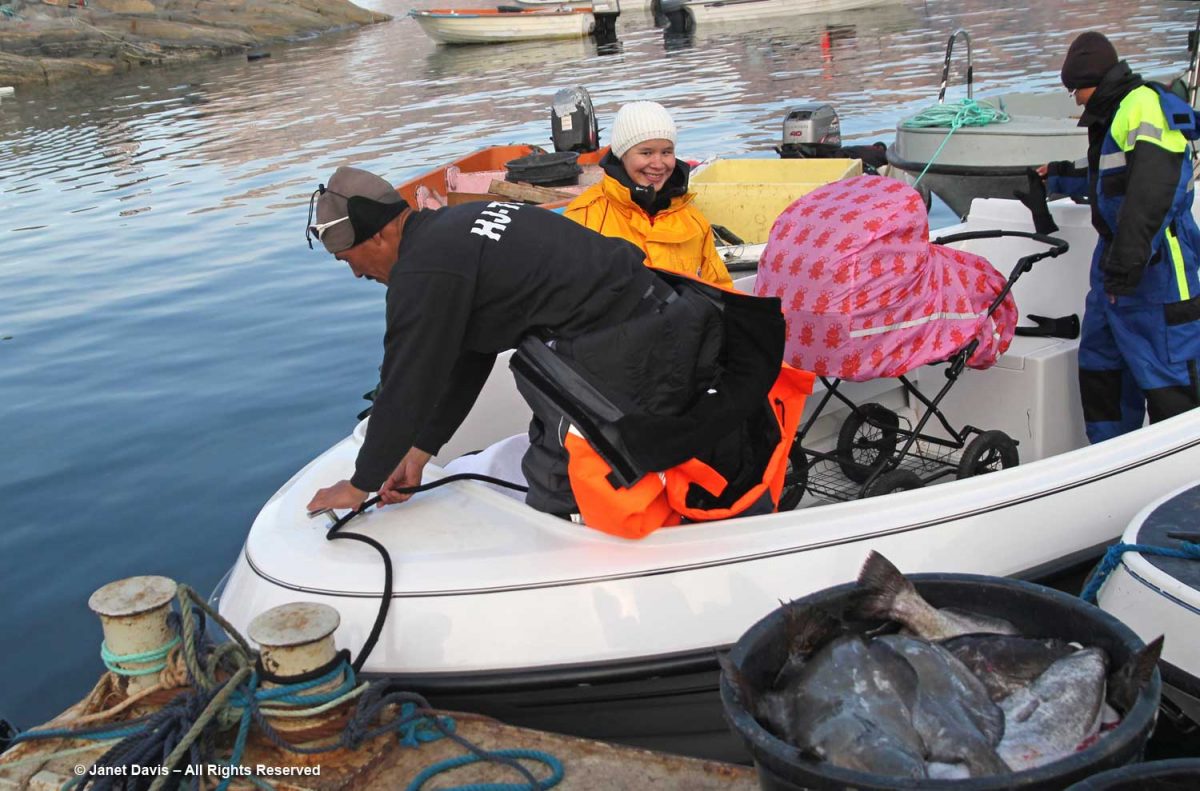
I believe this is Greenland halibut or turbot, which requires a very long line.
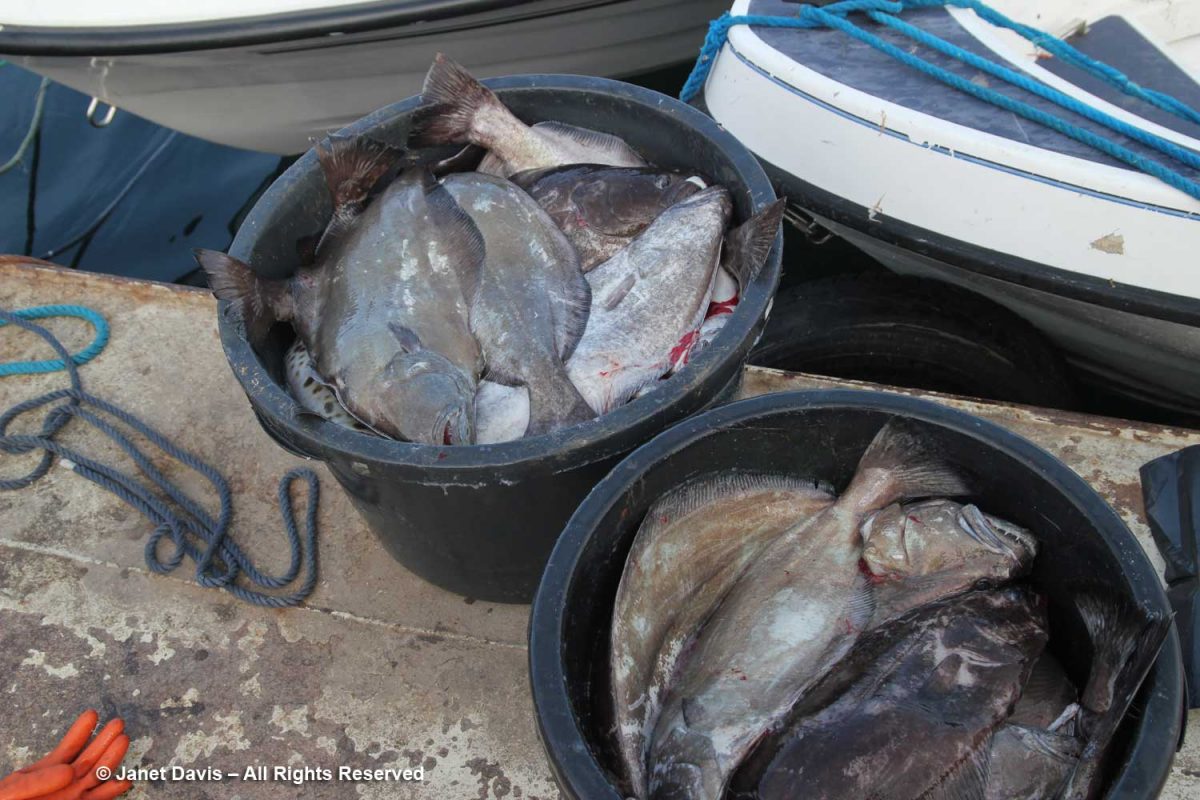
The MV Sea Adventurer was waiting for us in Uummannaq Fjord like a picture postcard, and there was a much-heralded activity for late afternoon! I chose to be an upper-deck photographer, rather than a participant….
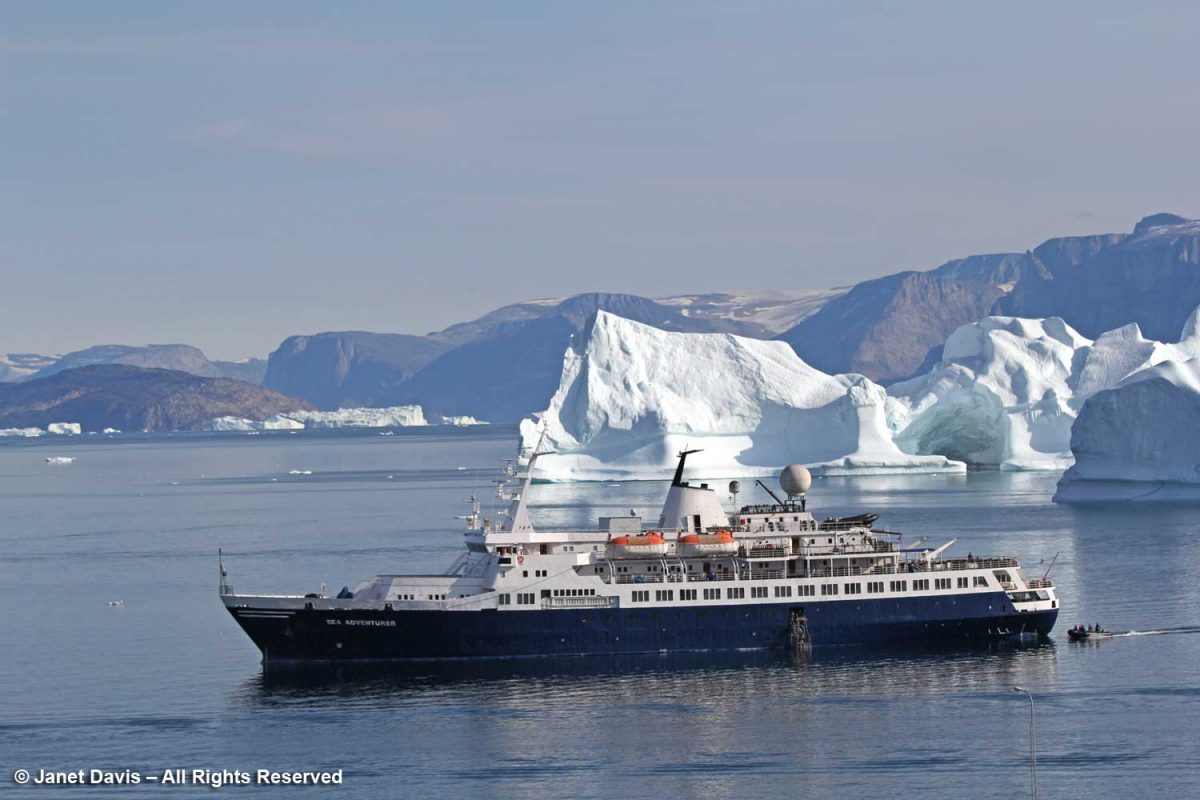
…. so I captured this portside view of the “support crew”, i.e. expedition leader Stefan Kindberg, sea bird biologist Mark Mallory, and photographer Dennis Minty. Support for what, you ask? Why…..
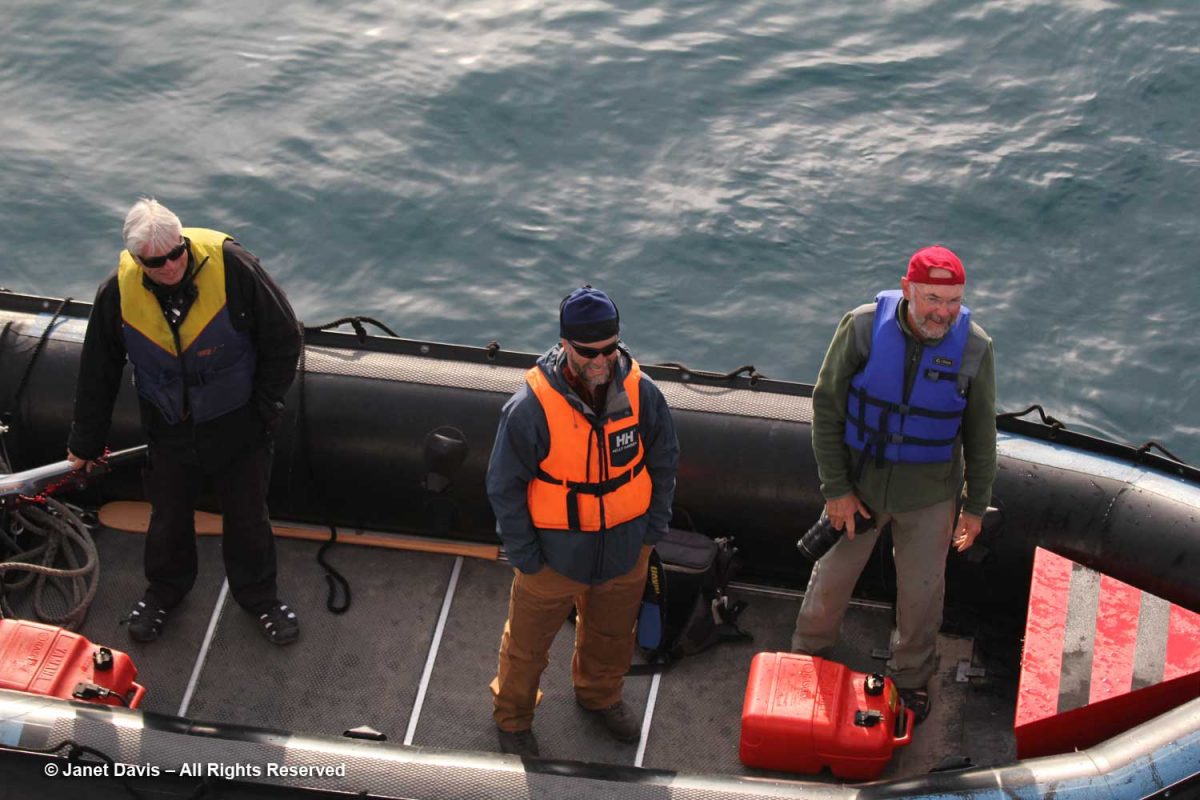
….. the famous Polar Plunge, of course! The Arctic in early August averages about 4C (39F) so this is not like jumping off a cottage dock into a warm lake in Canadian summer… unless your dock happens to be north of the Arctic Circle. Neverthless, I enjoyed the style of these brave expedition participants, e.g. the one-knee cannonball….
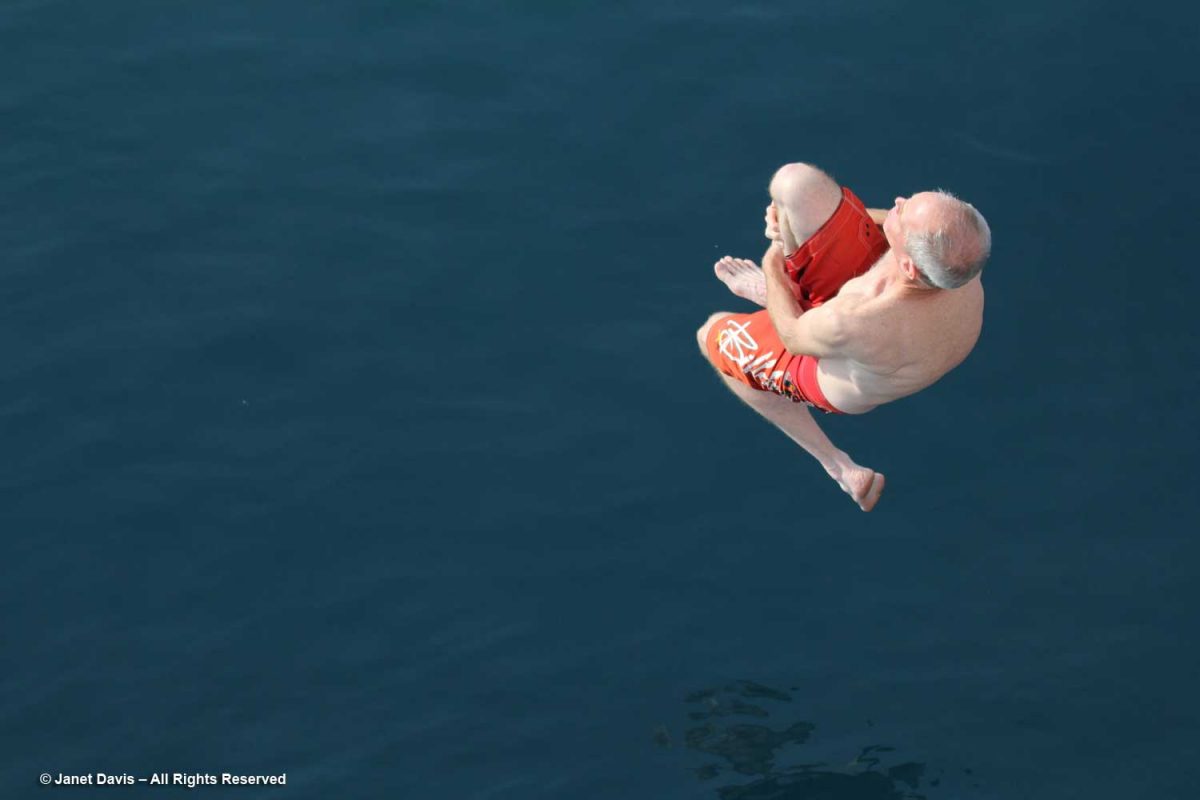
… the spread-eagle with winter-themed socks (the rope being a safety measure for those who requested it)….
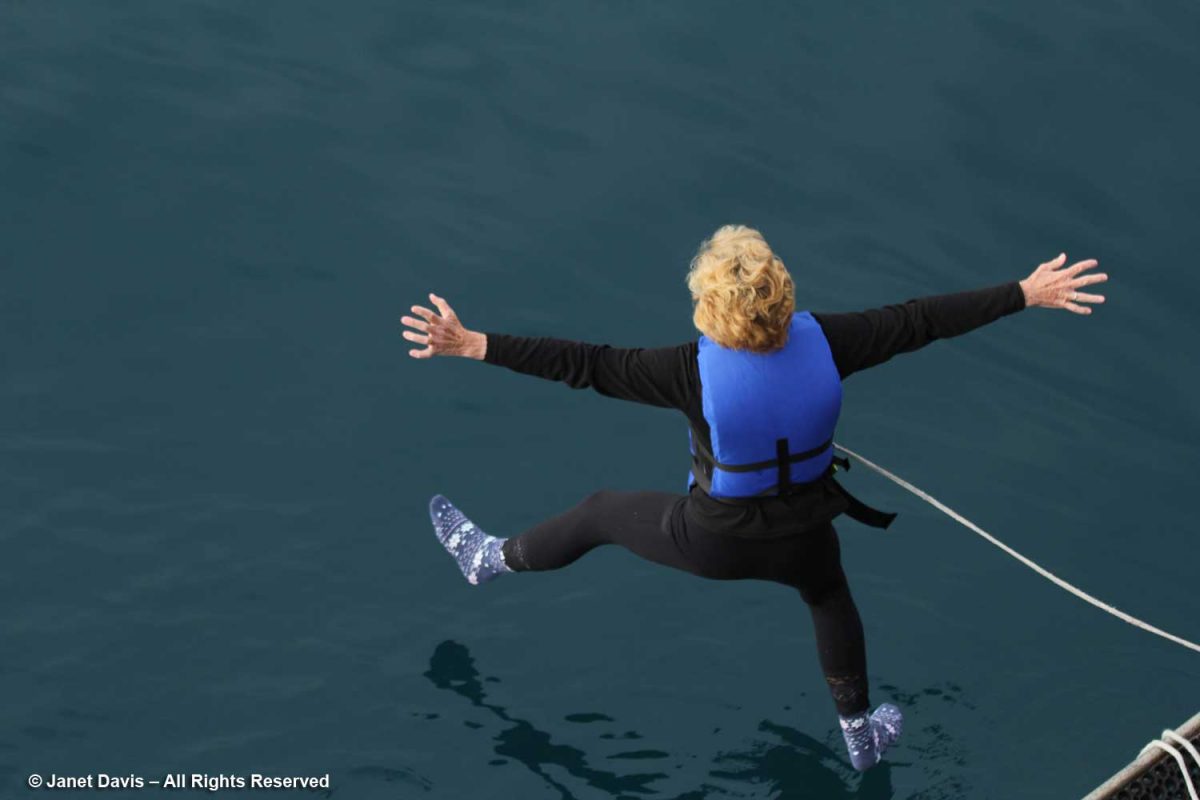
….the pas de deux avec splash…..
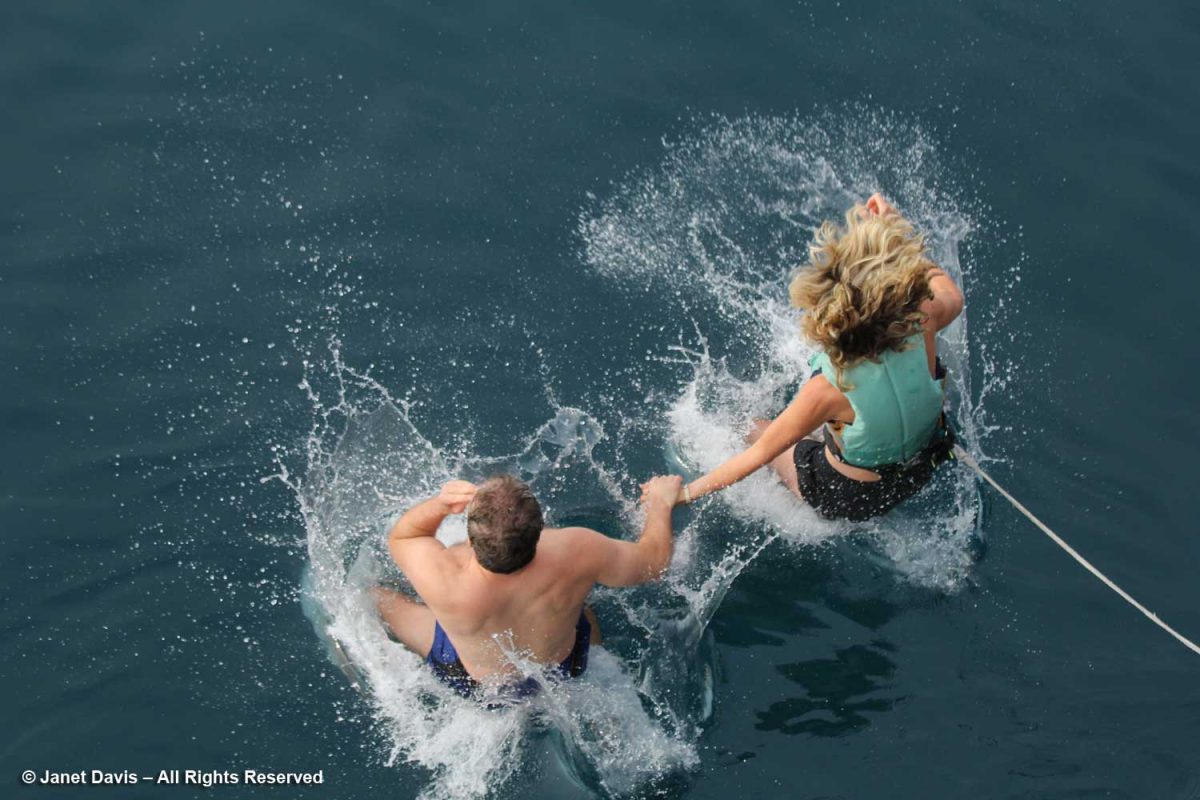
….the perfect stride jump….
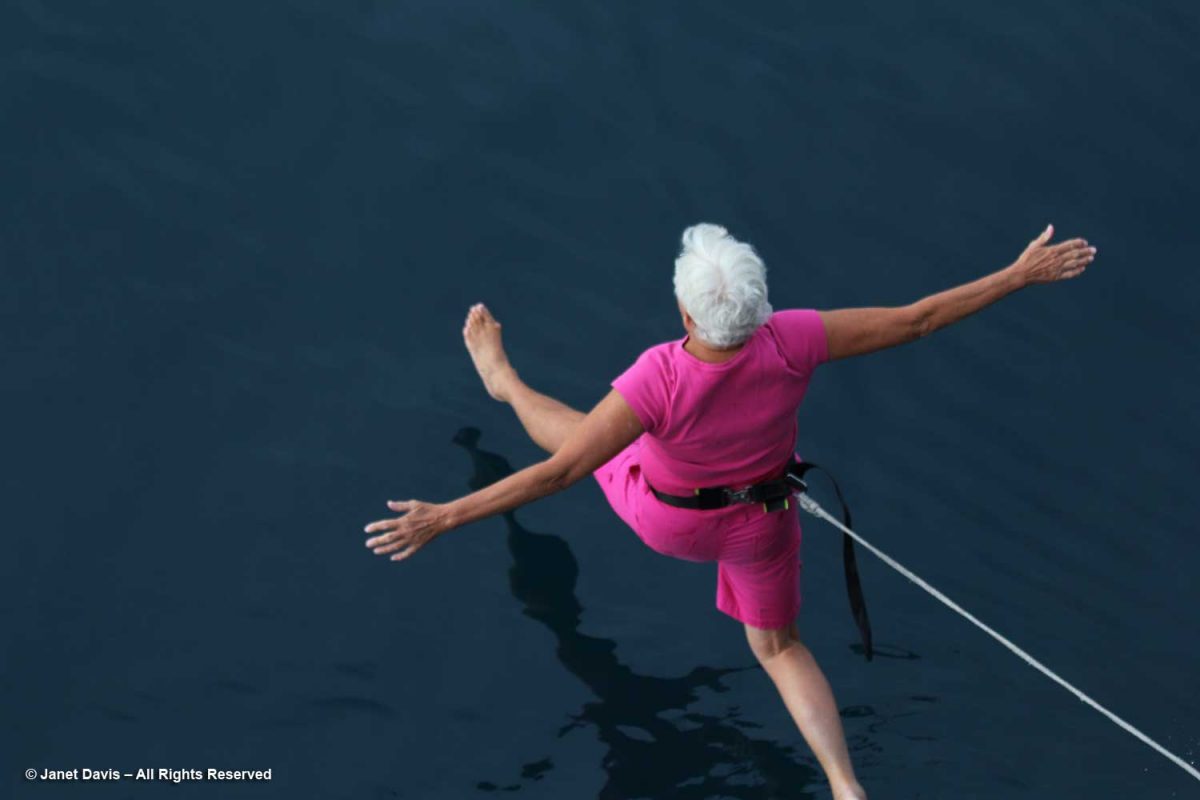
….the “toque-and-socks might keep those parts warm”….
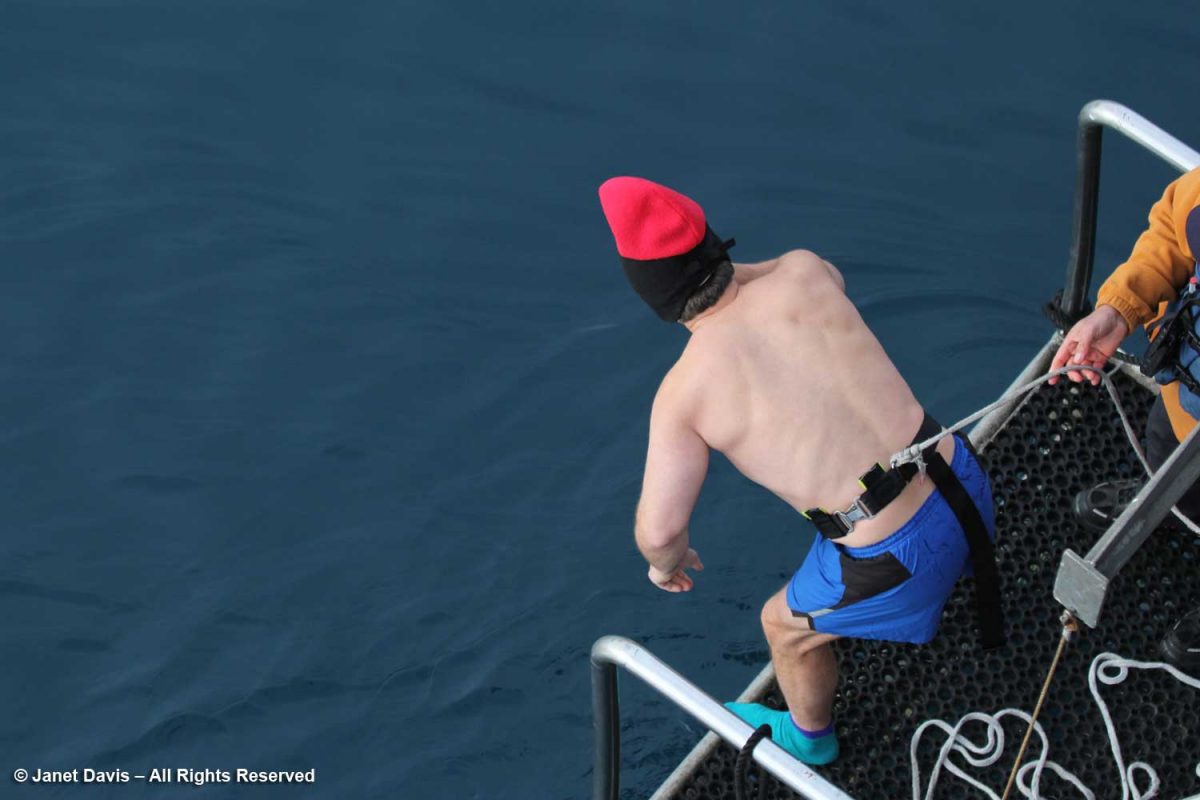
….and, finally, the straight-as-an-arrow submerge.
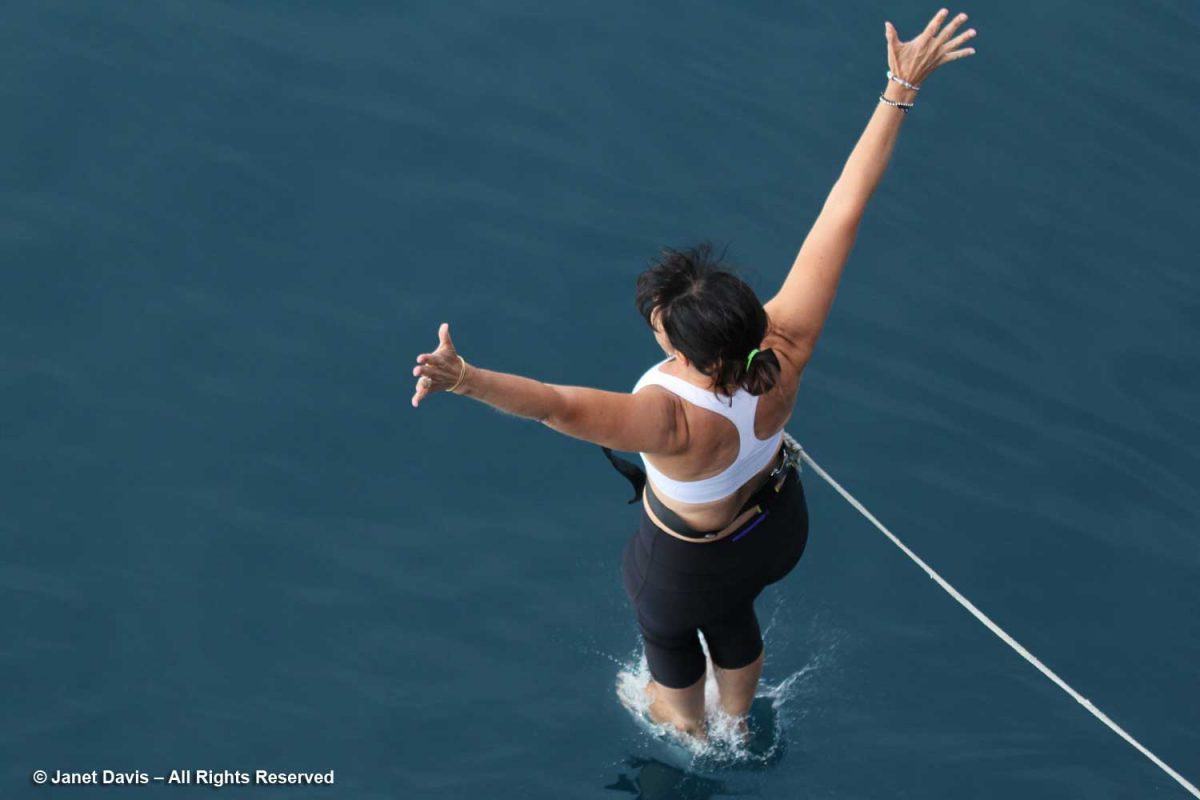
With all the polar plunges finished – there were more than 30 passengers in all! – and the participants congratulated, the anchor was lifted and we sailed off around the icebergs of Uummannaq Fjord towards our next day’s destination.
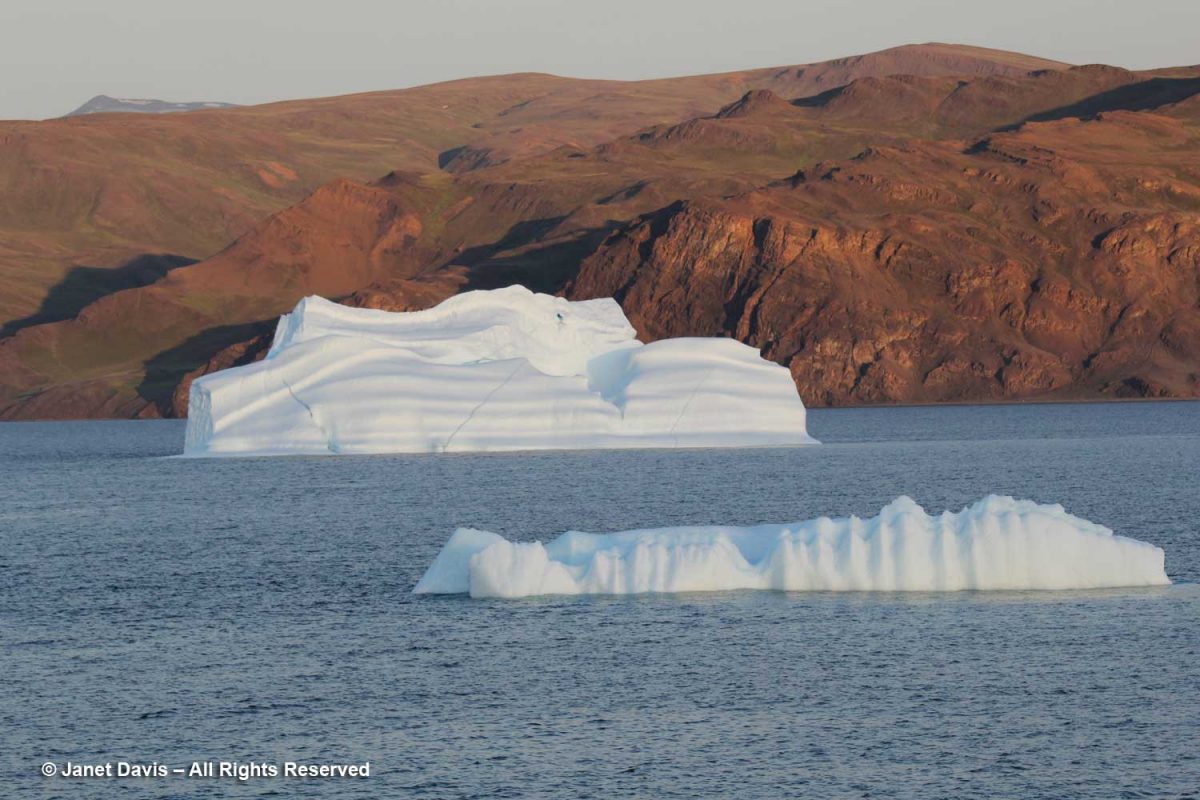
As always, guests found a spot on the deck to keep watch for animal life….
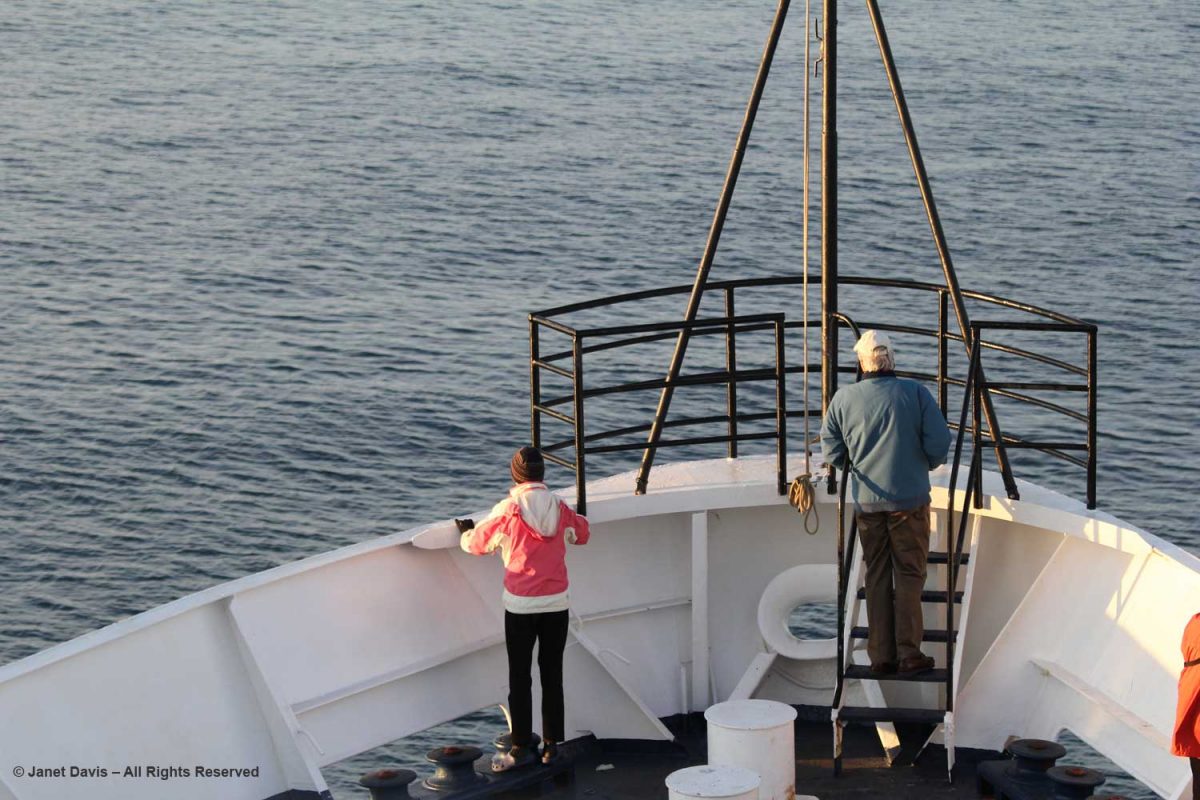
….. and as we came out into open water, we were rewarded with the sight of a pair of fin whales (Balaenoptera physalus) spouting, to the delight of our marine biologist, Deanna Leonard-Spitzer. Fins are the second-biggest mammals on the planet, after blue whales.
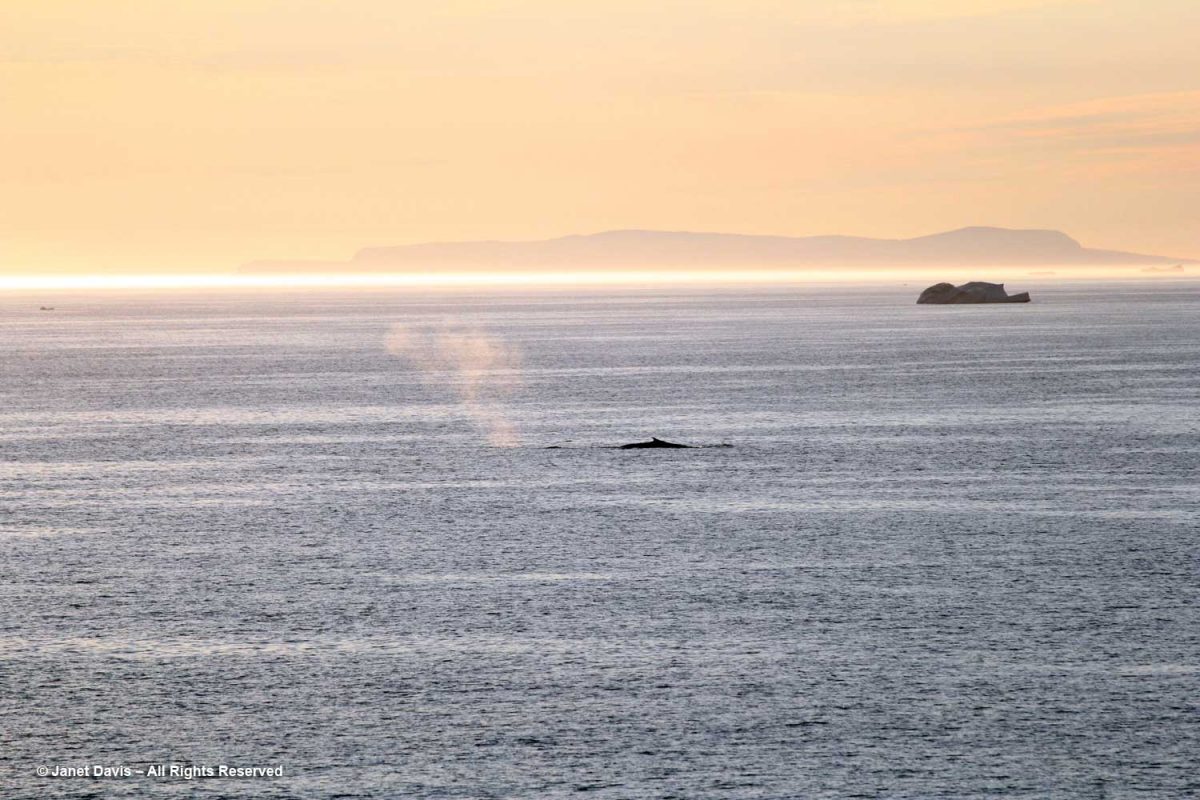
Late that night, as I closed my book and prepared to go to sleep, I took a look out our window and found that though the sky had darkened somewhat, it was still more like 9 o’clock on a summer evening in Canada….
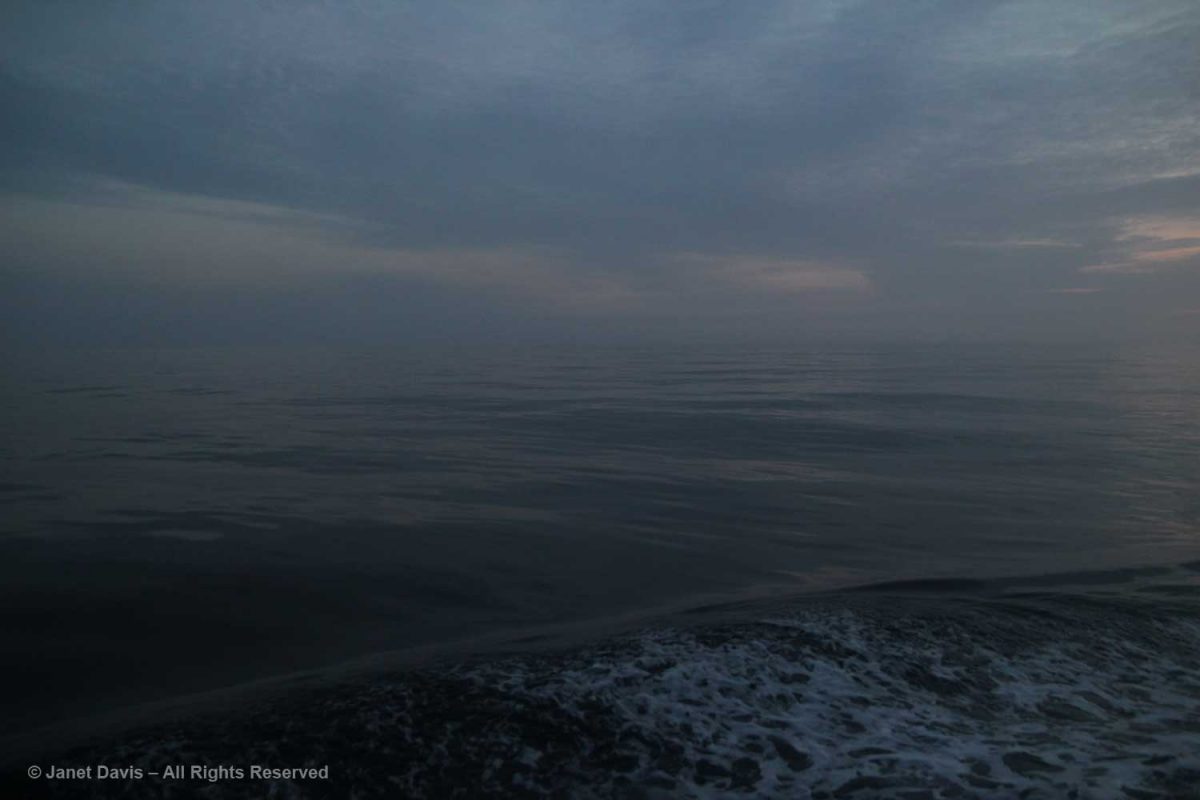
…. than half-past midnight in the Arctic.

**************
This is the 7th in my Eastern Arctic blog series on our wonderful expedition with Adventure Canada. And if you have an interest in doing an Arctic trip, their next scheduled expedition will feature Margaret Atwood! Be sure to read my other blogs on:

what a fabulous trip, and i really really enjoyed reading all about it! those puppies in the flowers were absolutely darling!
Thanks, Lisa. It was such a wonderful trip, so educational. And the sled puppies were adorable, and posed very nicely for me!